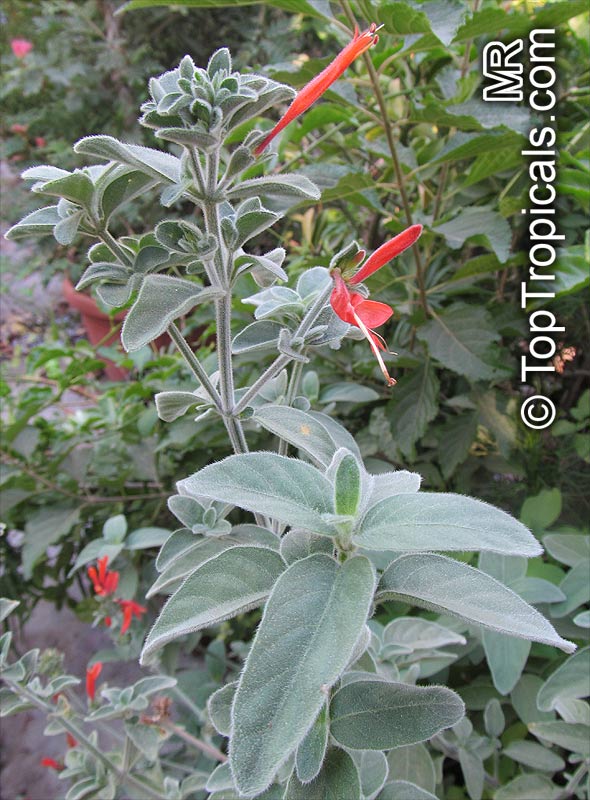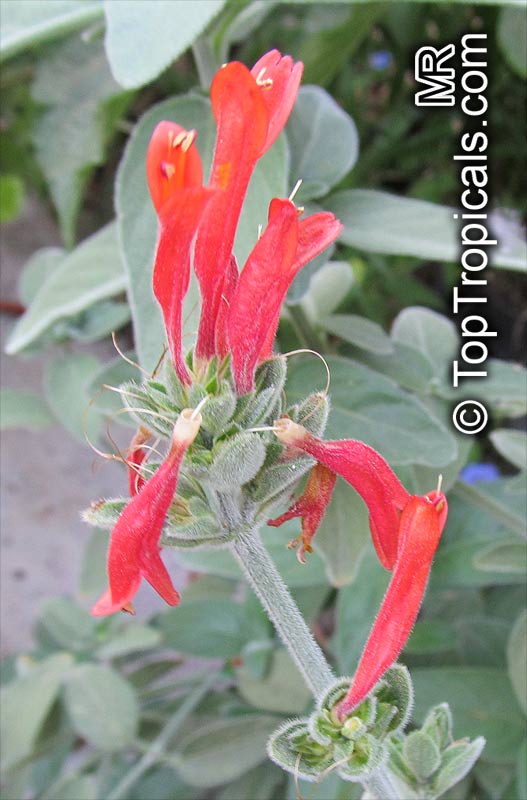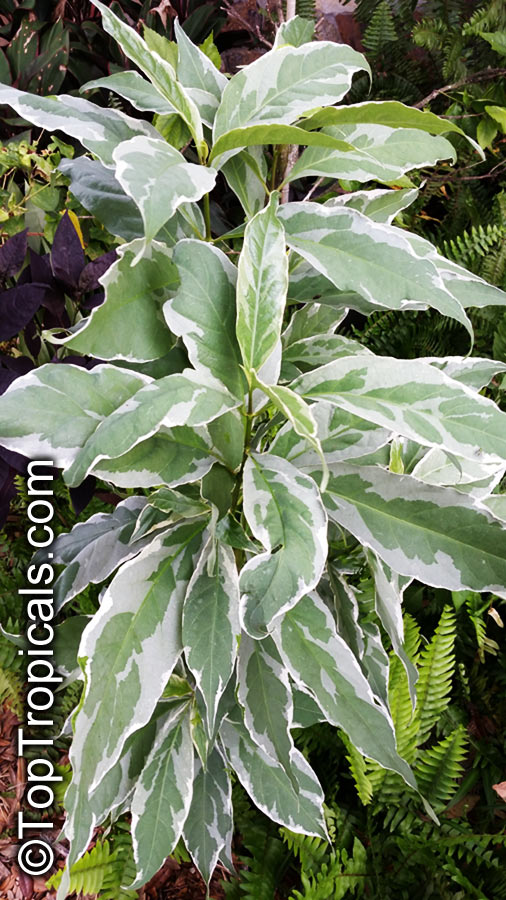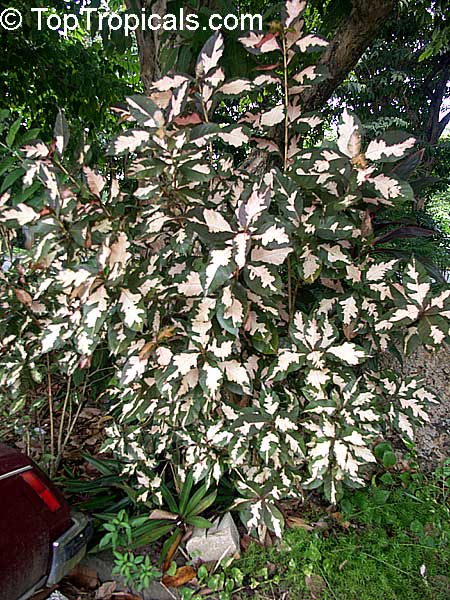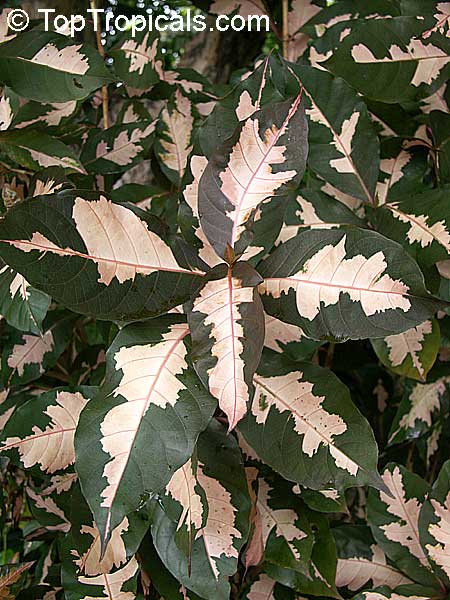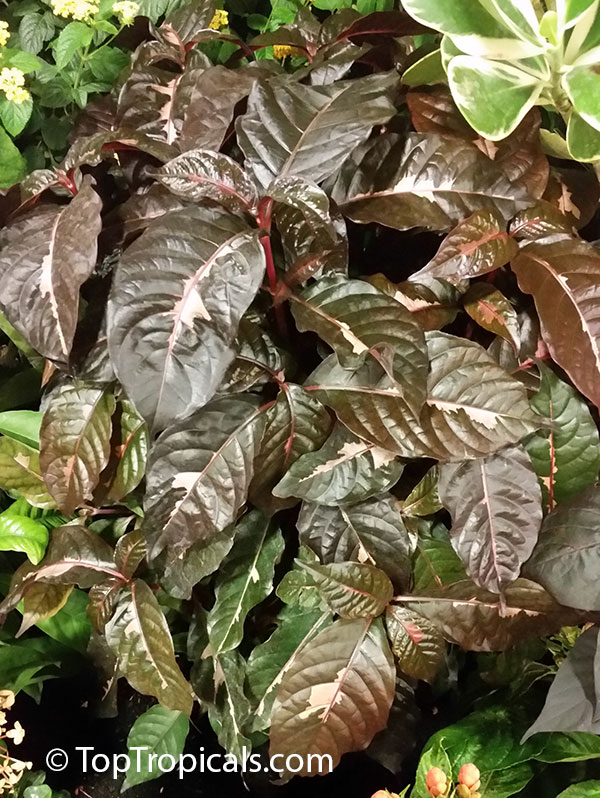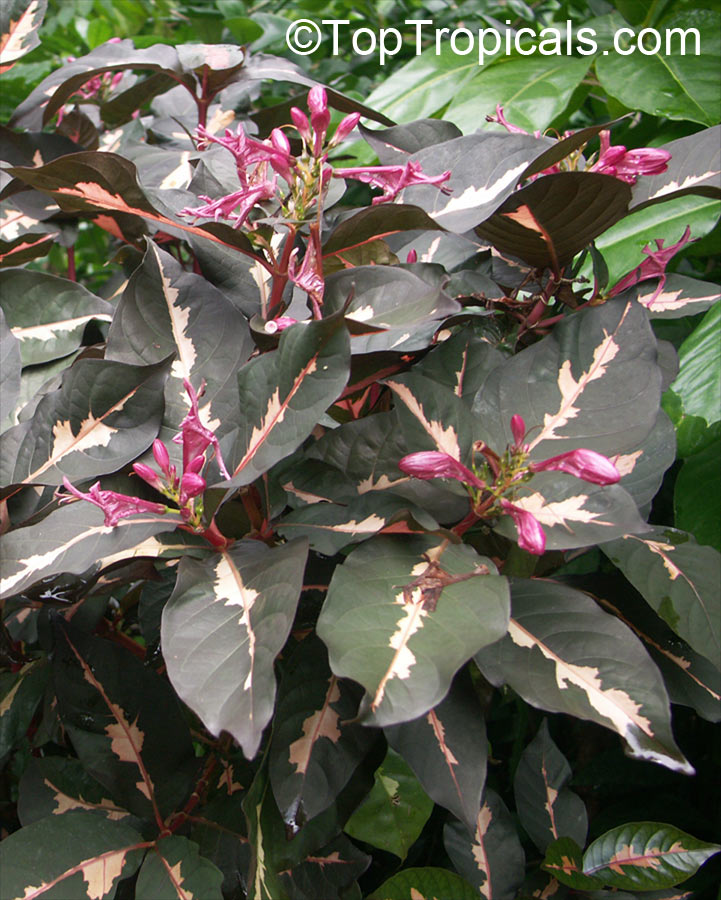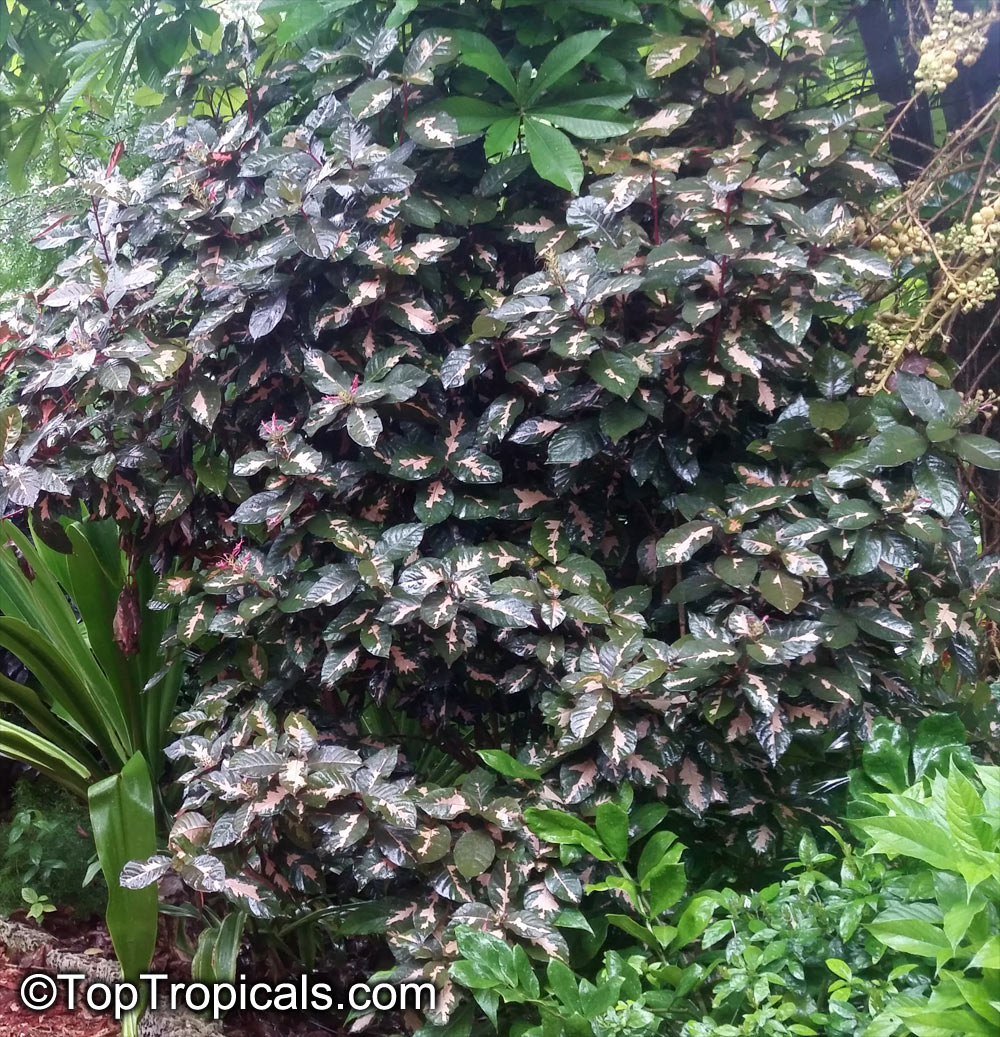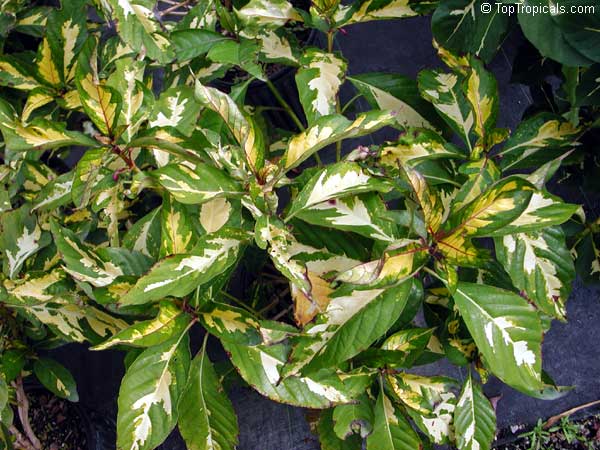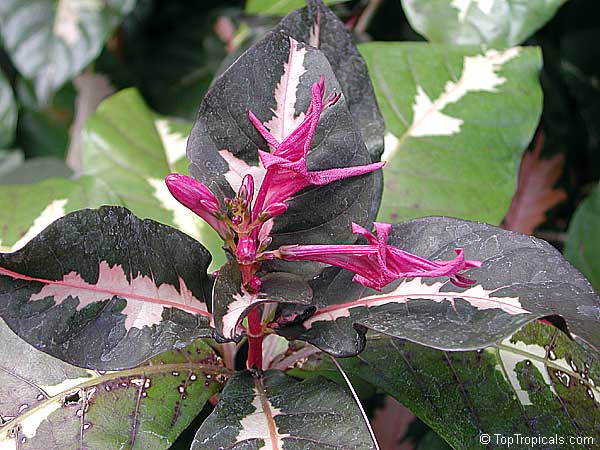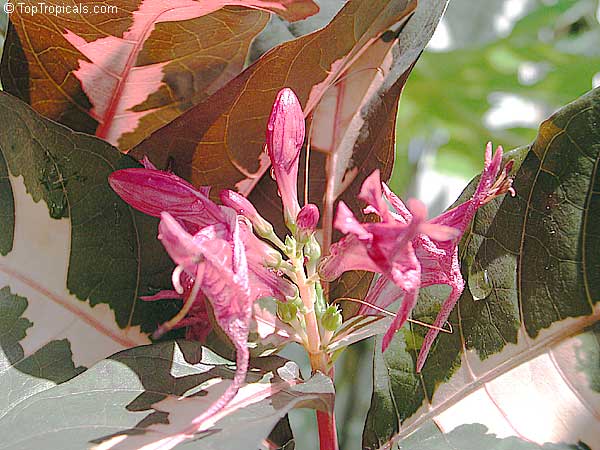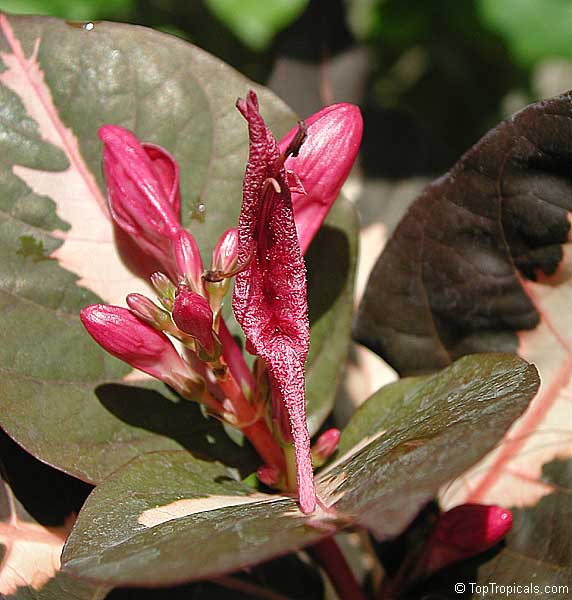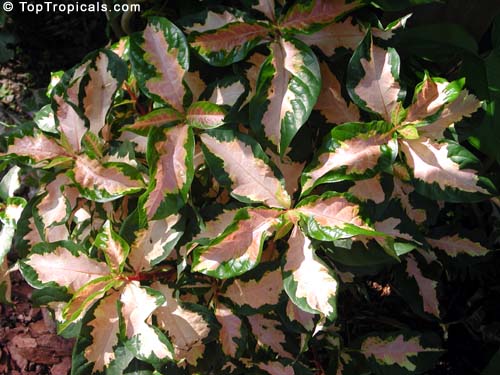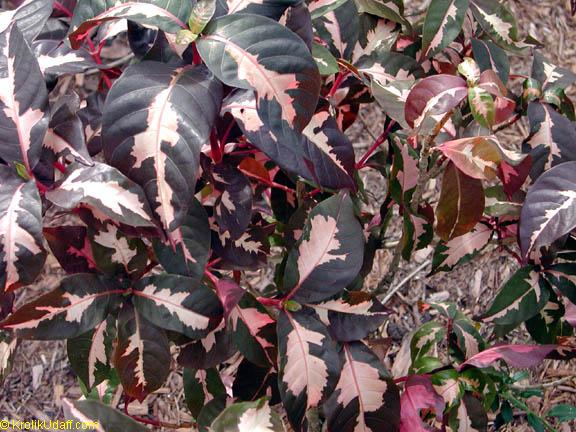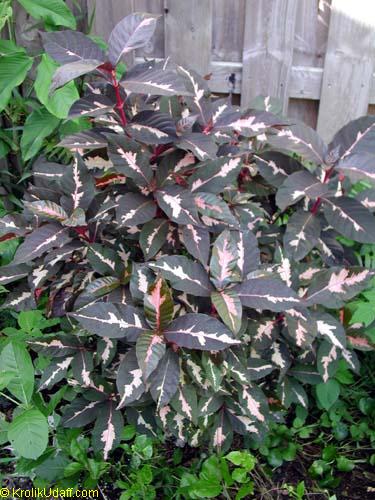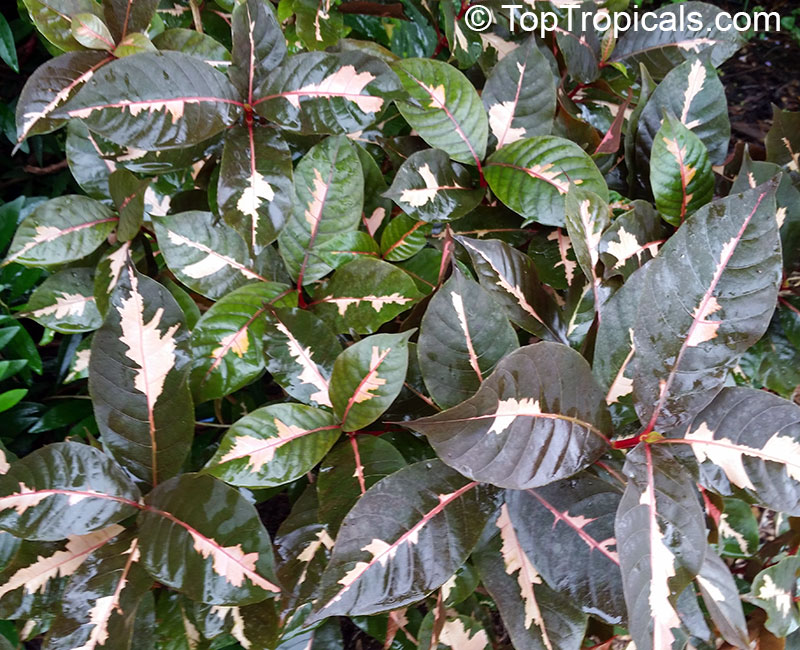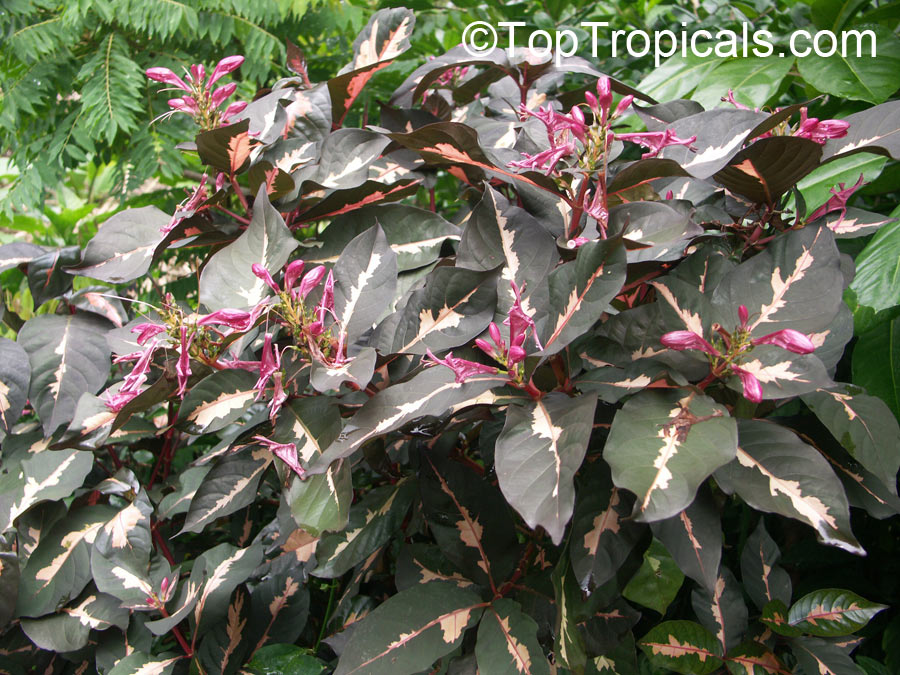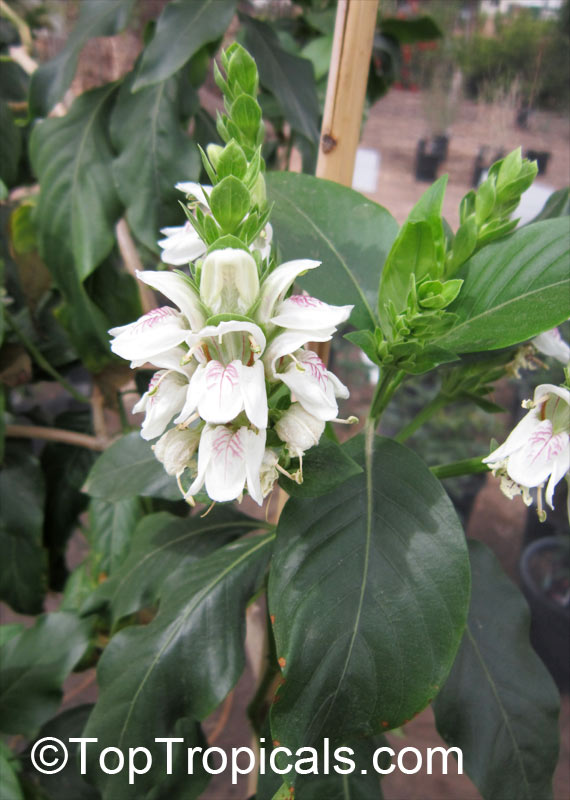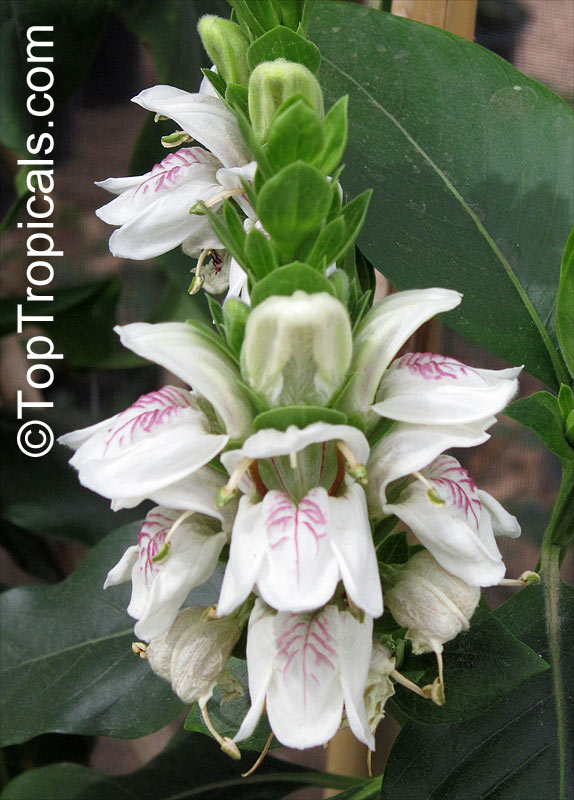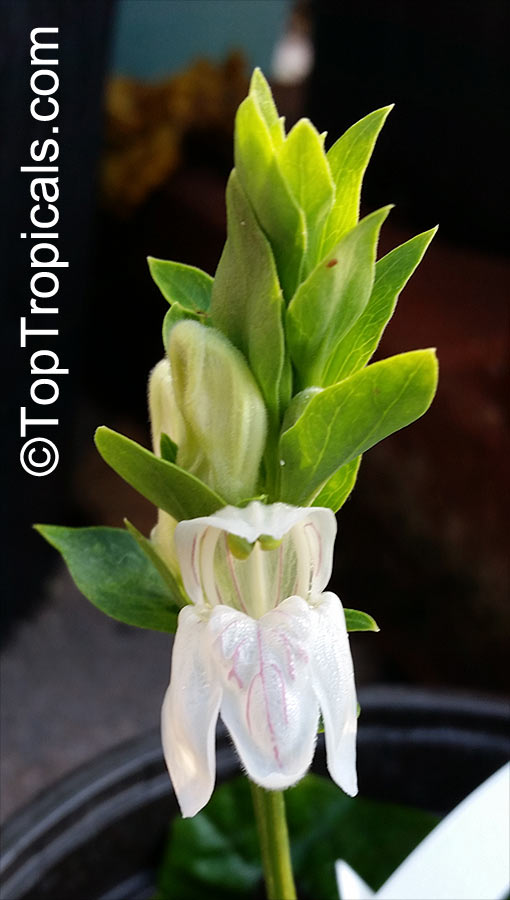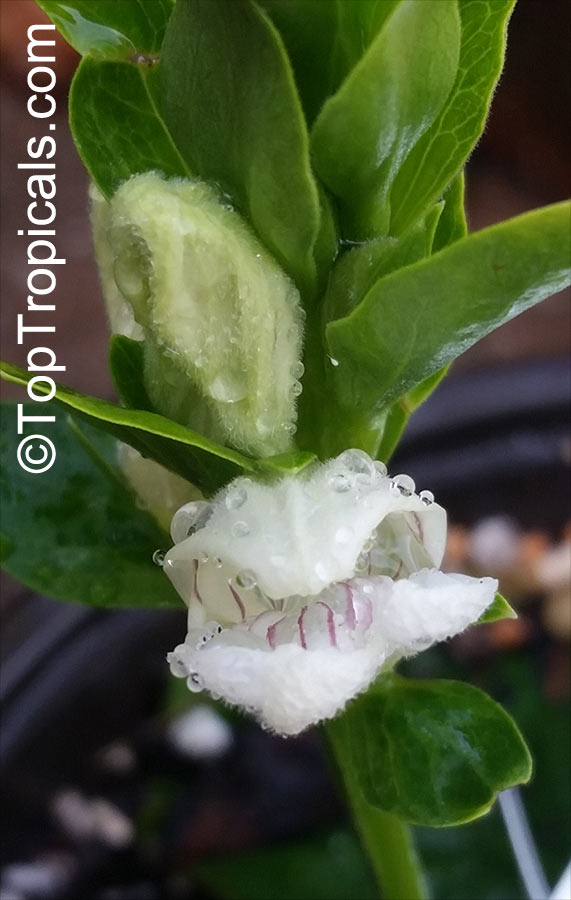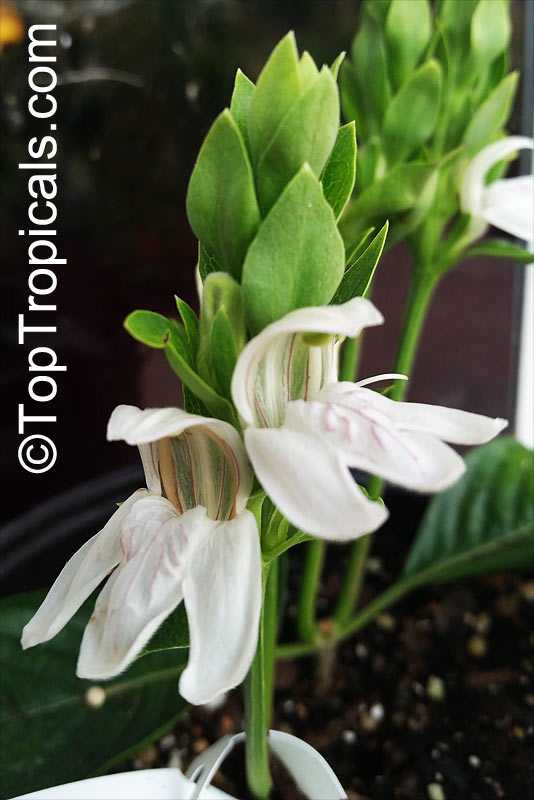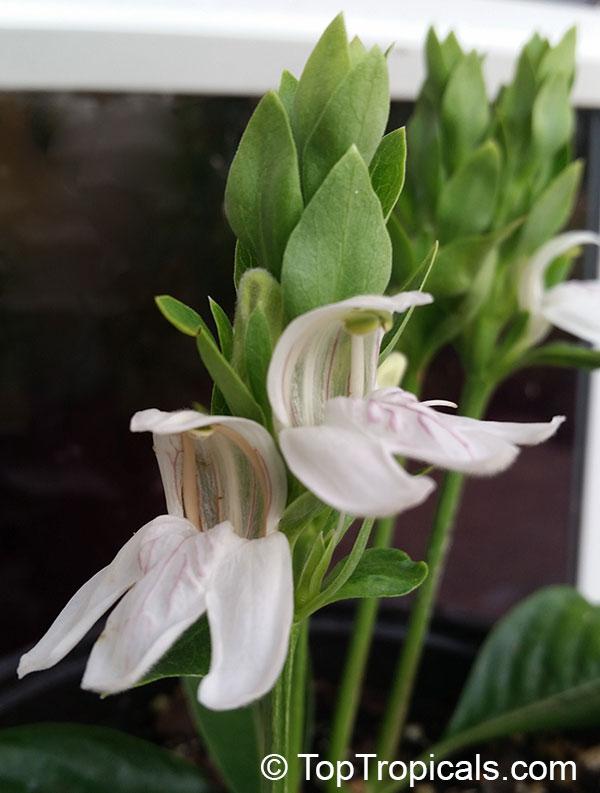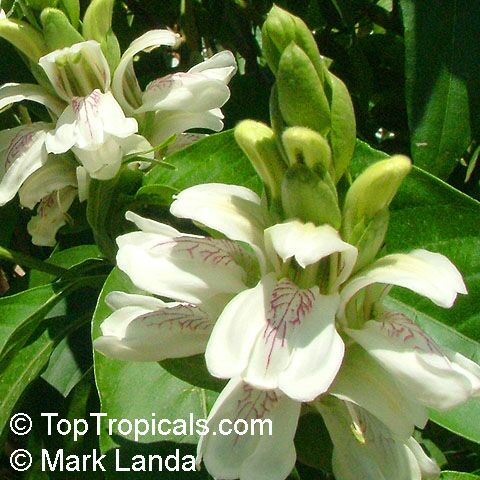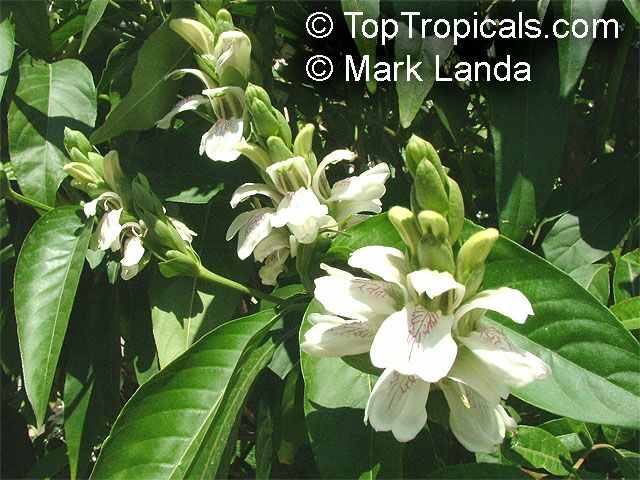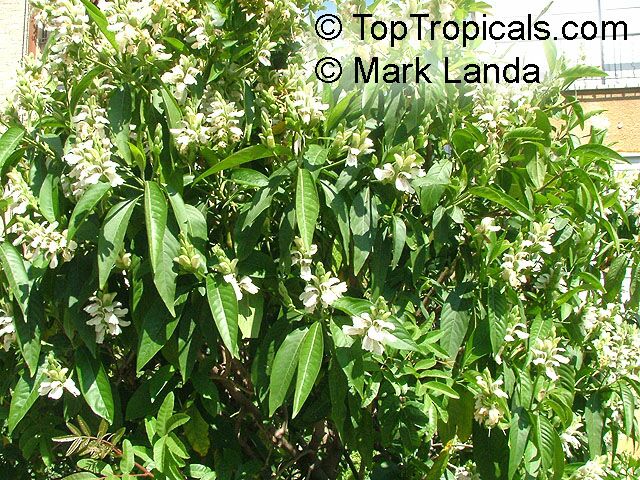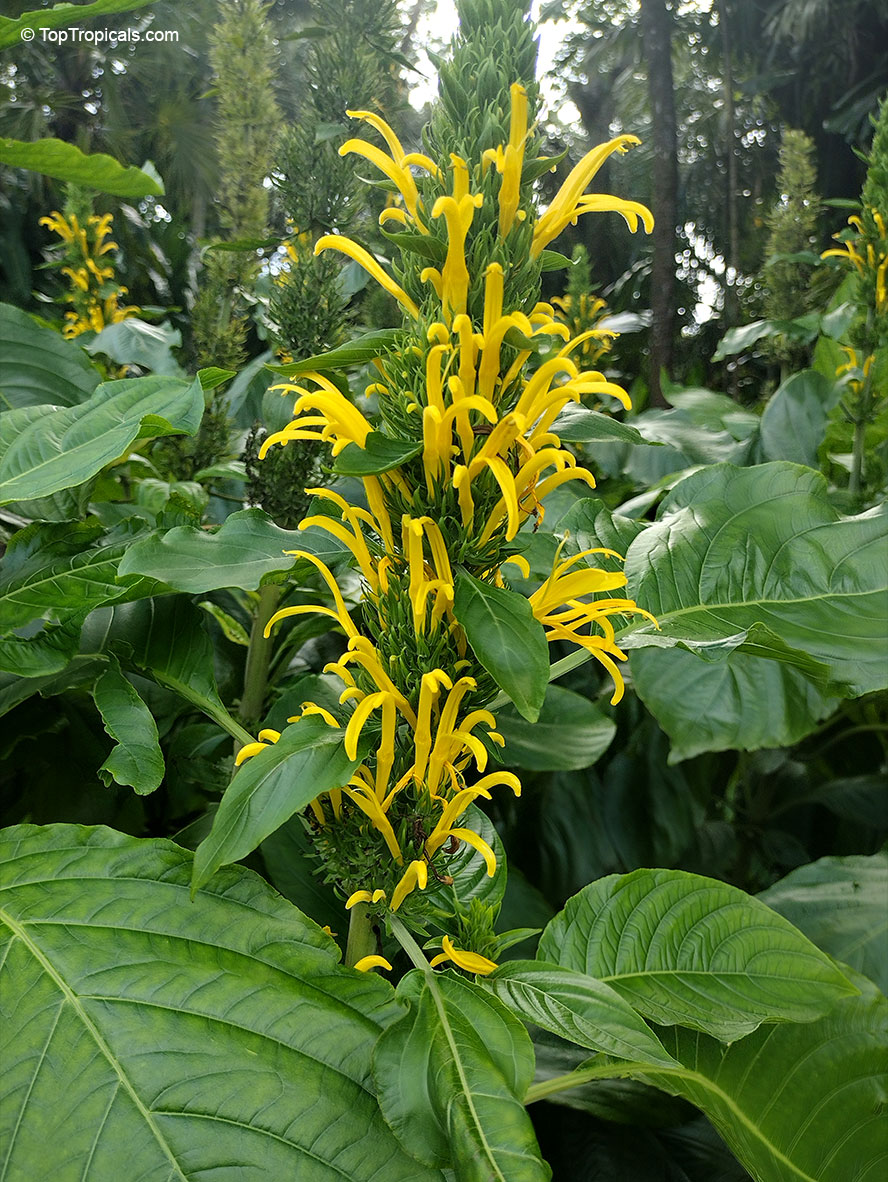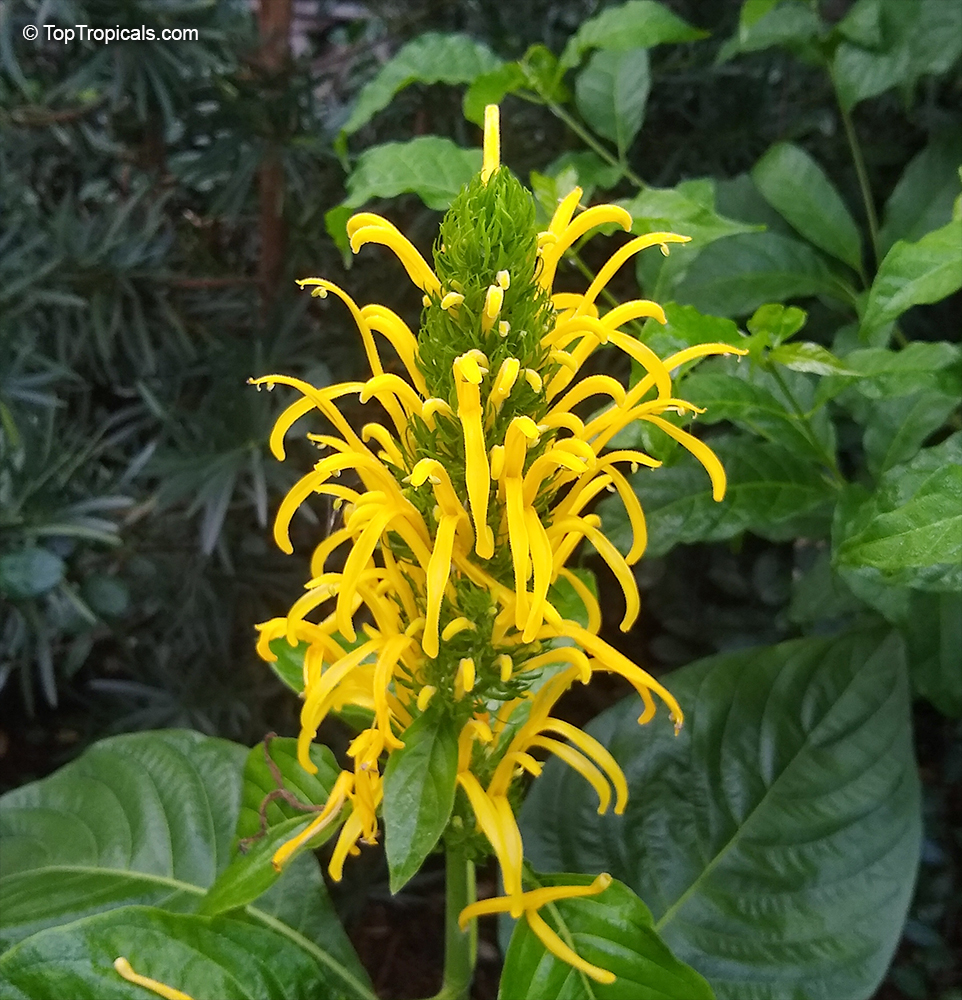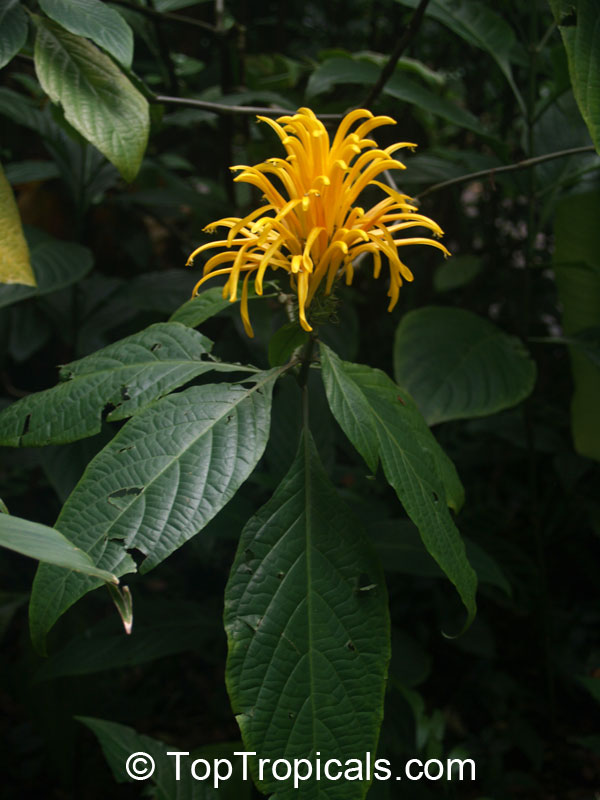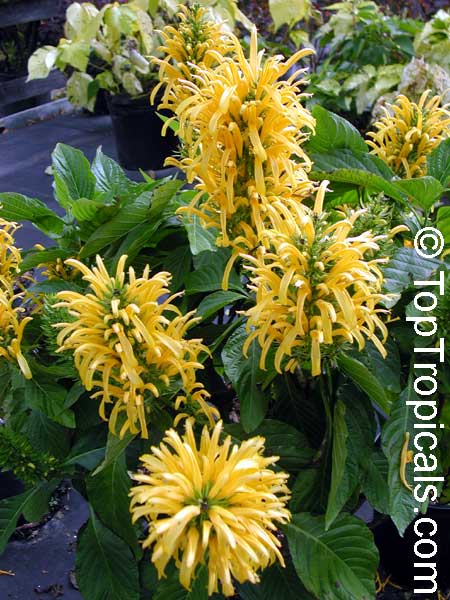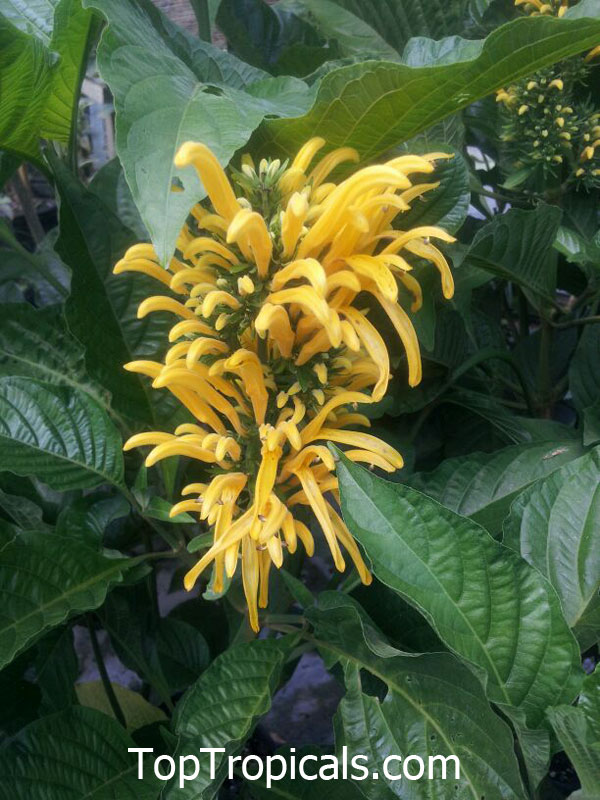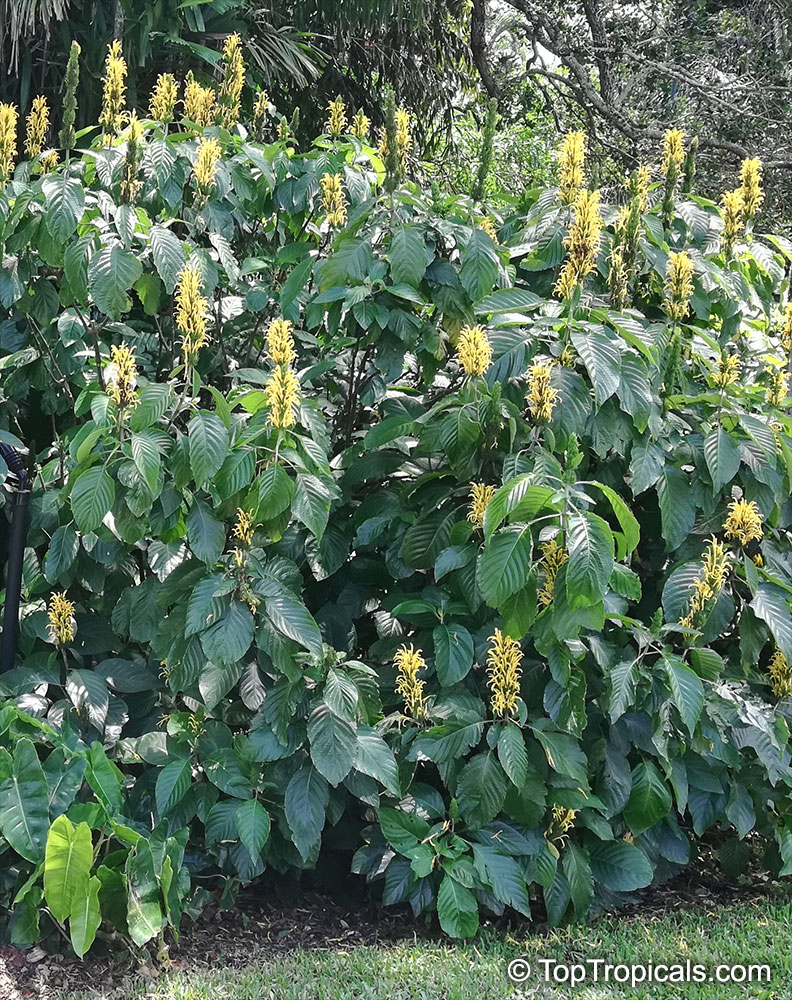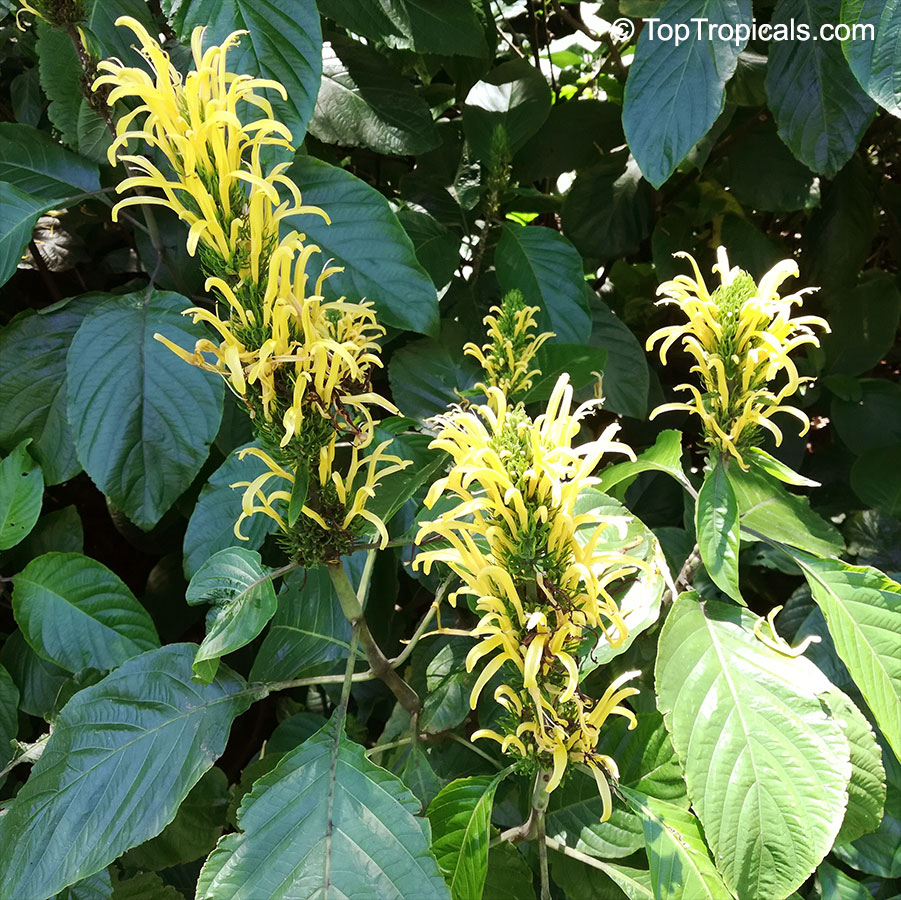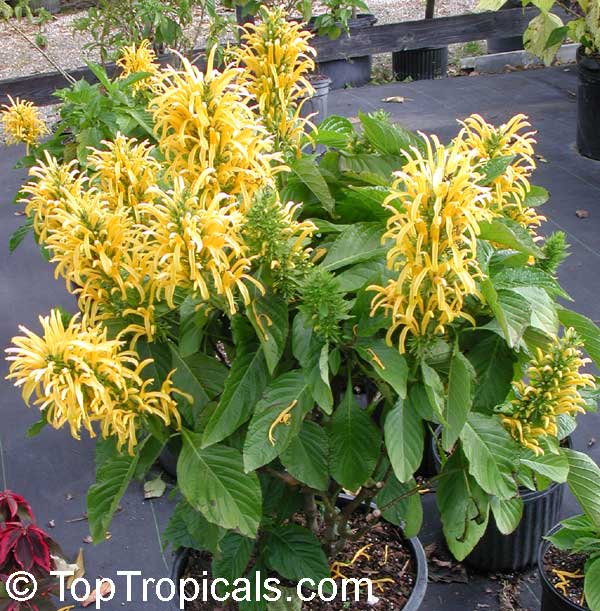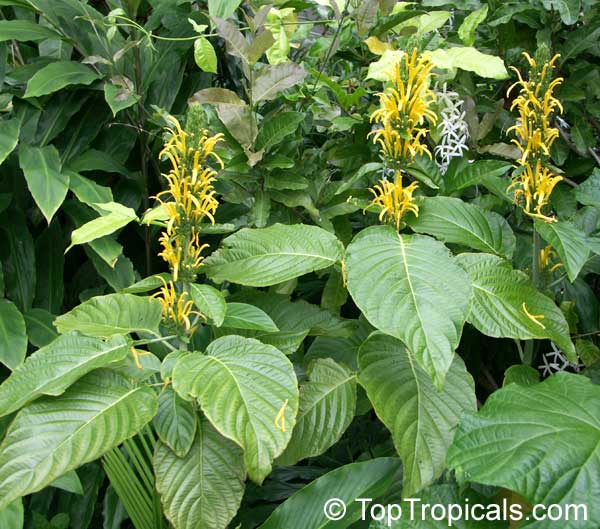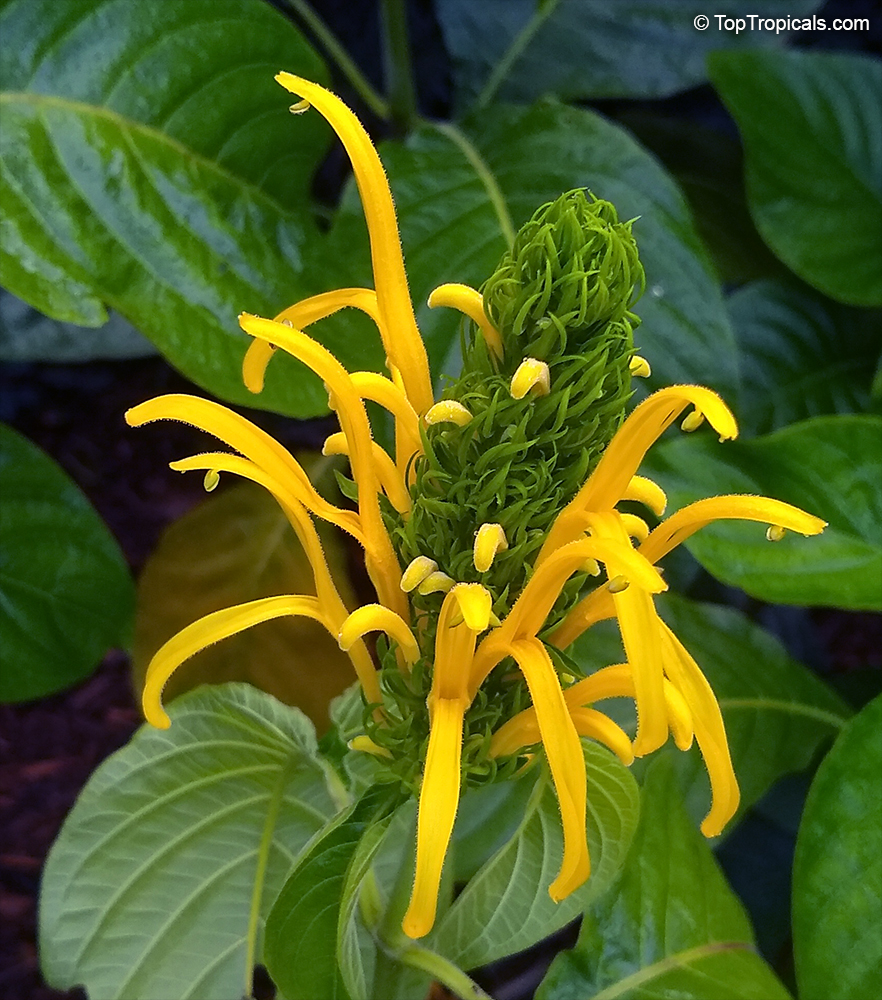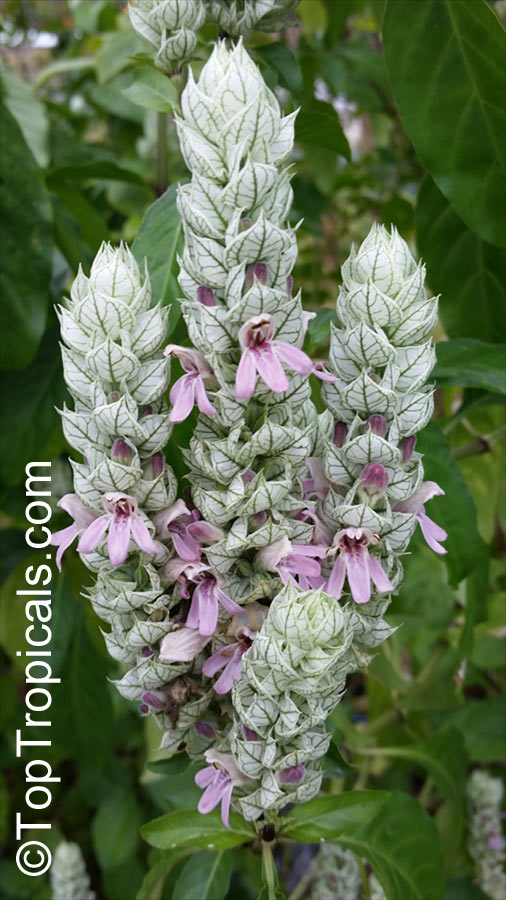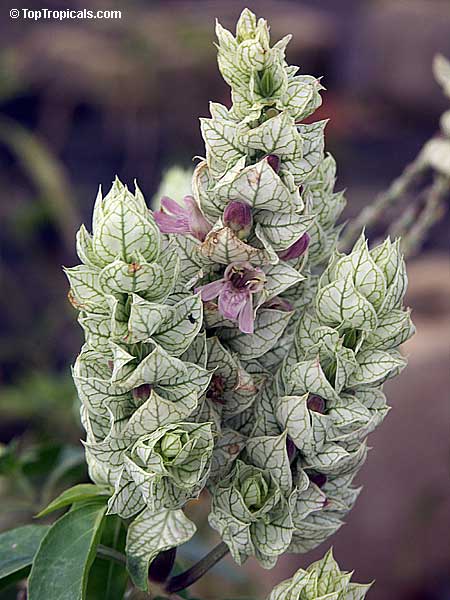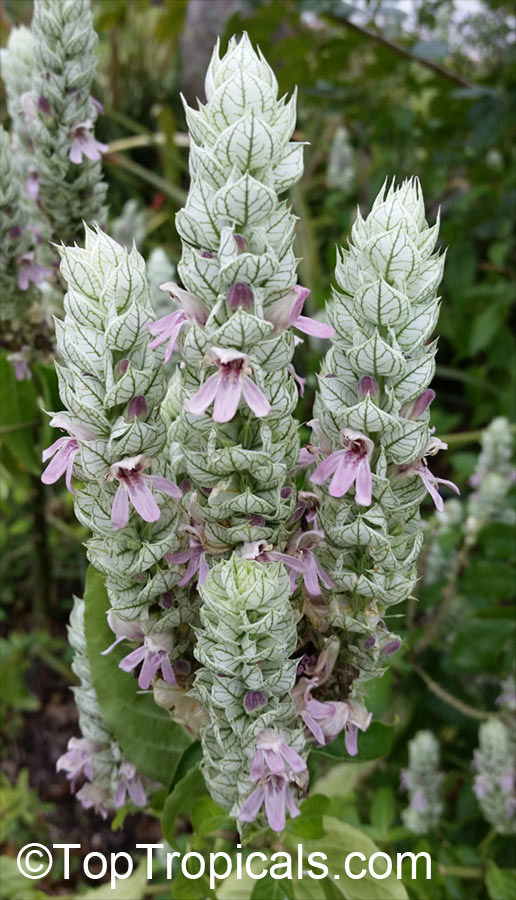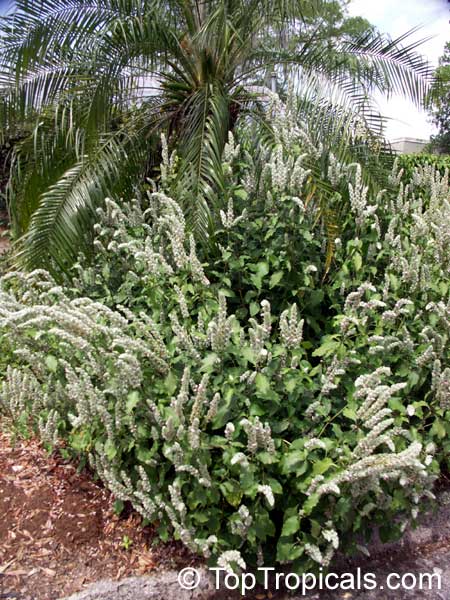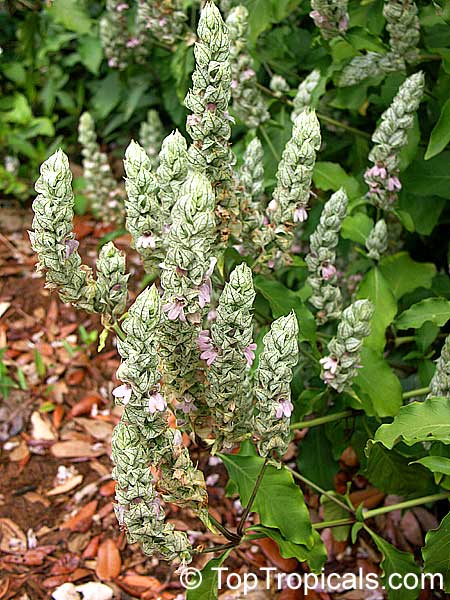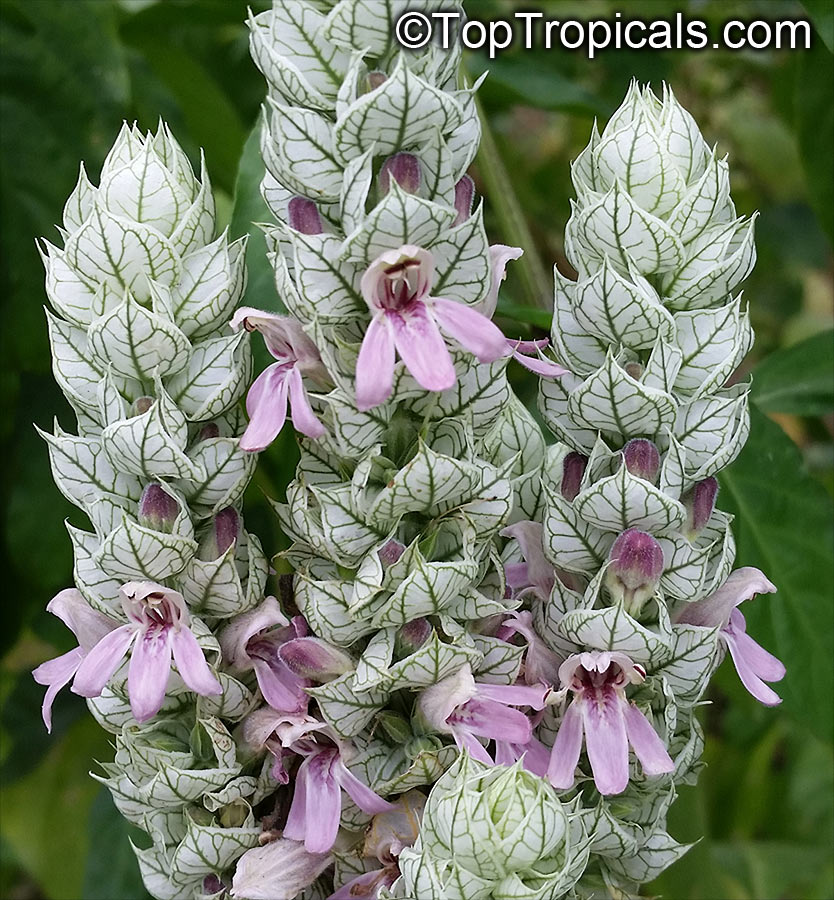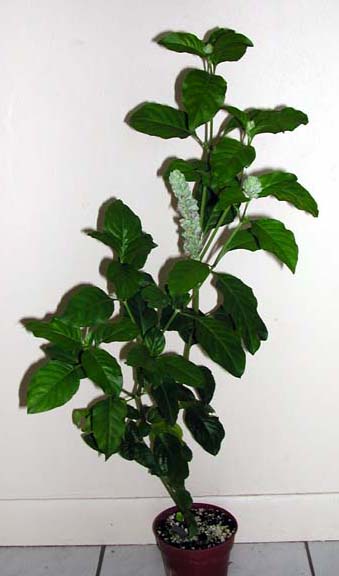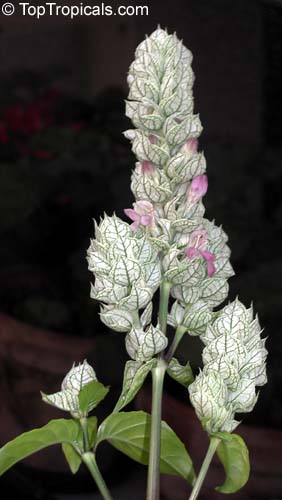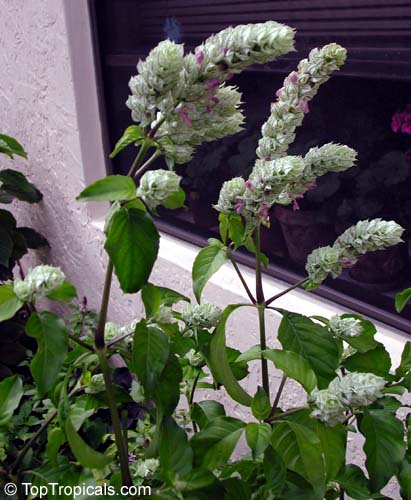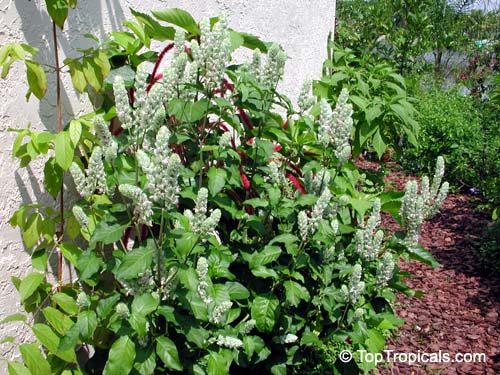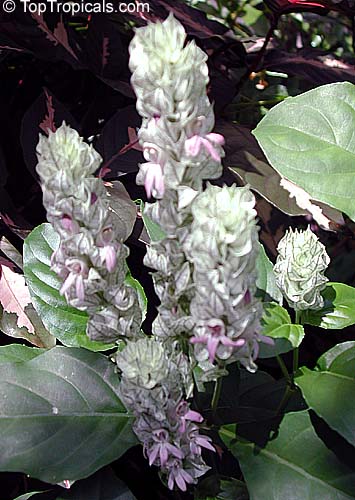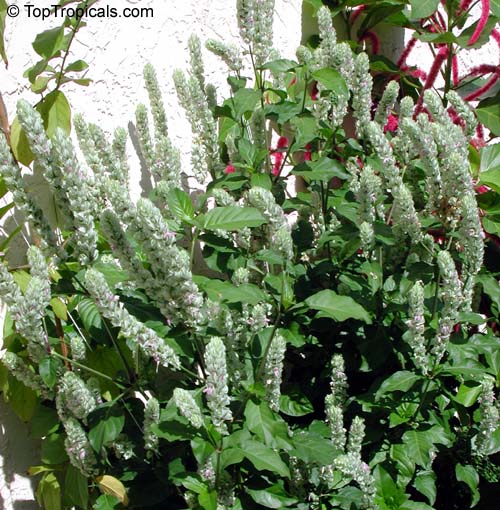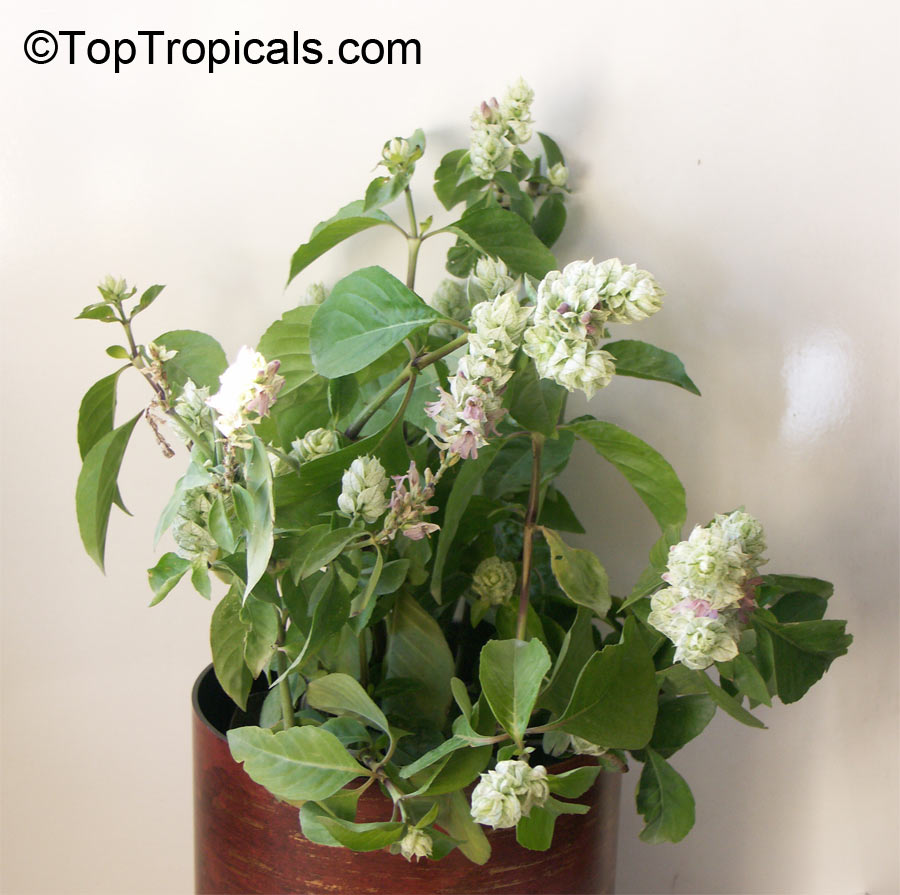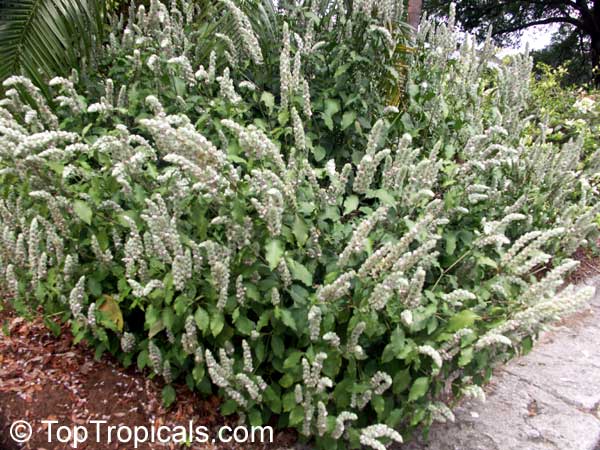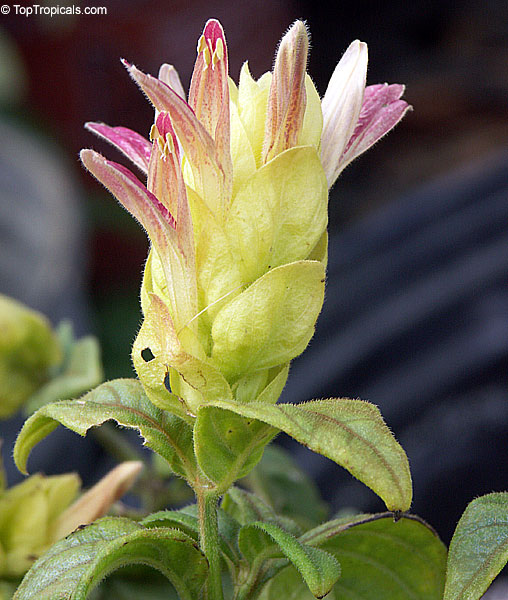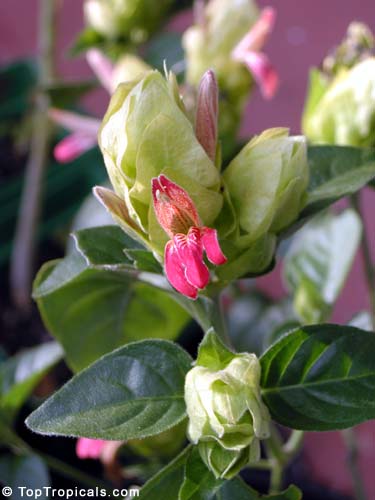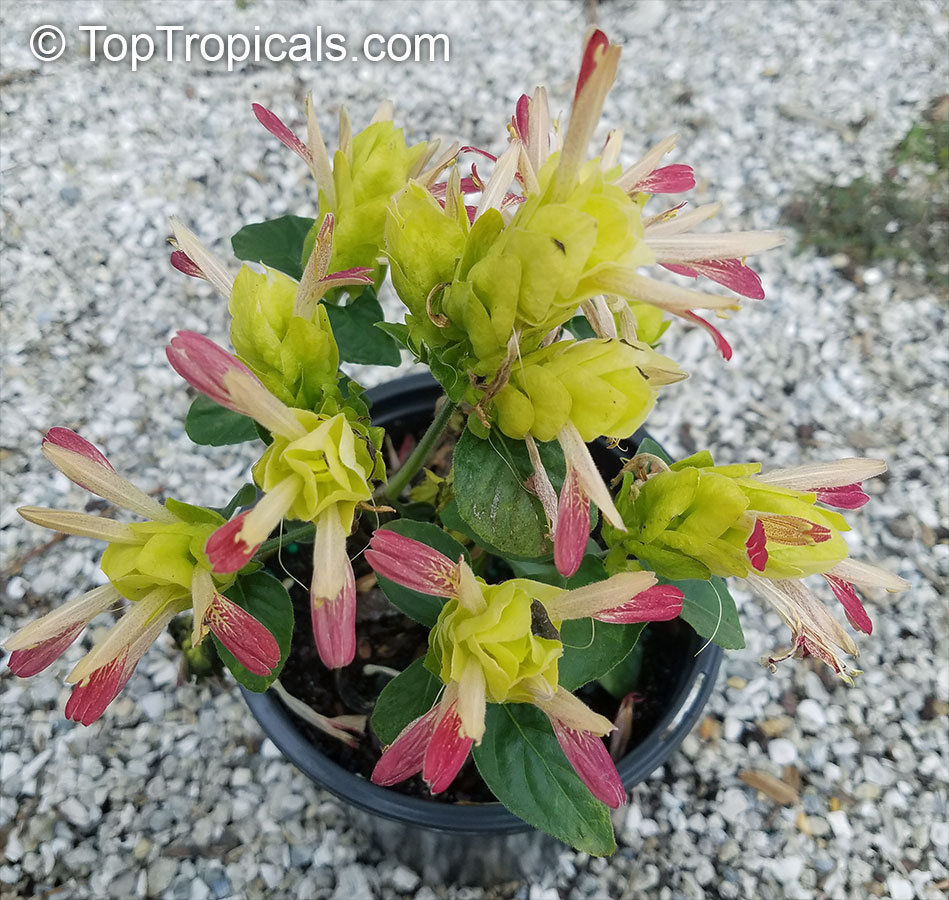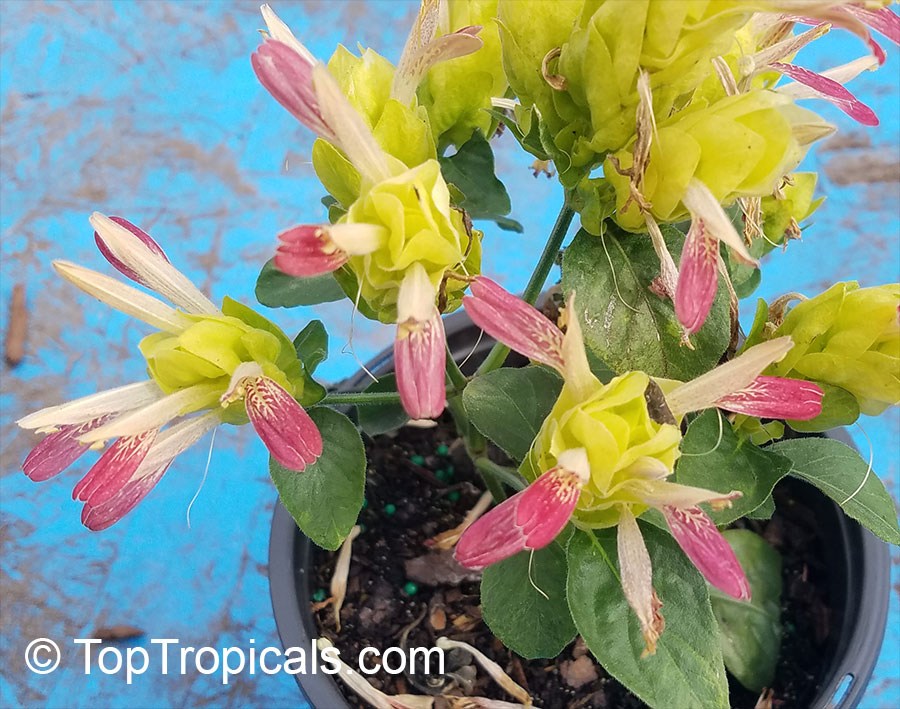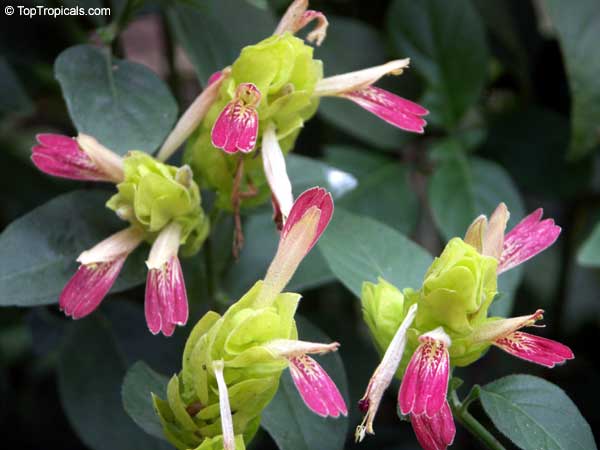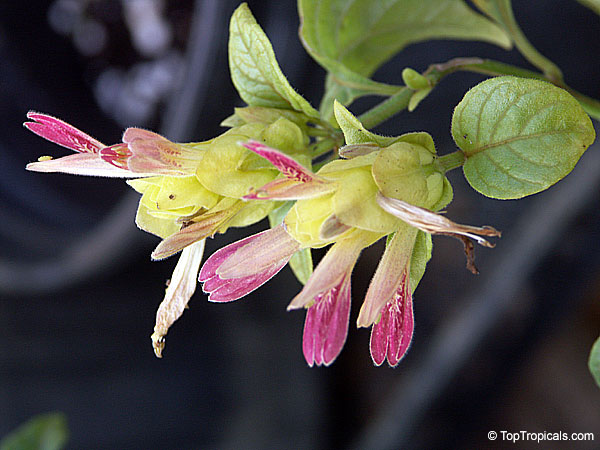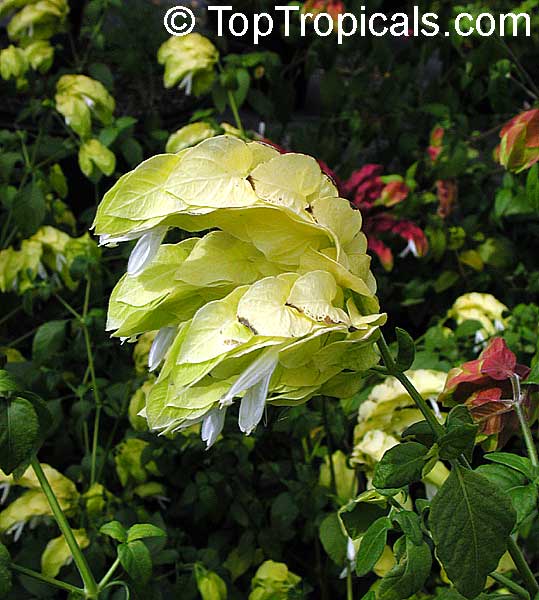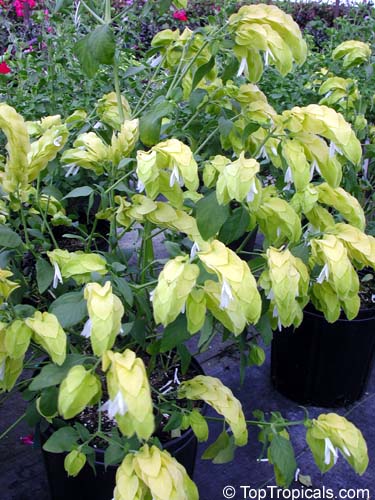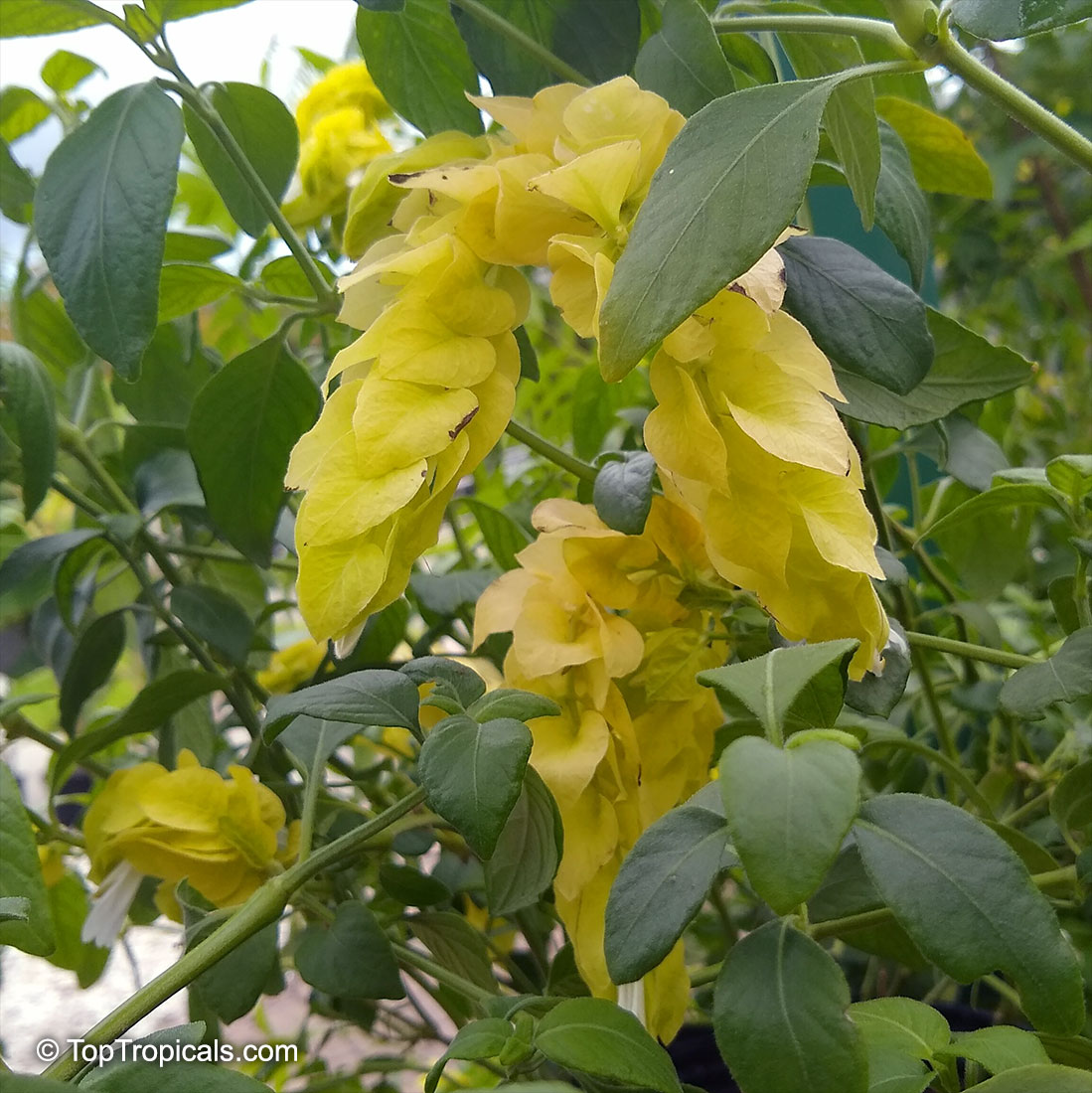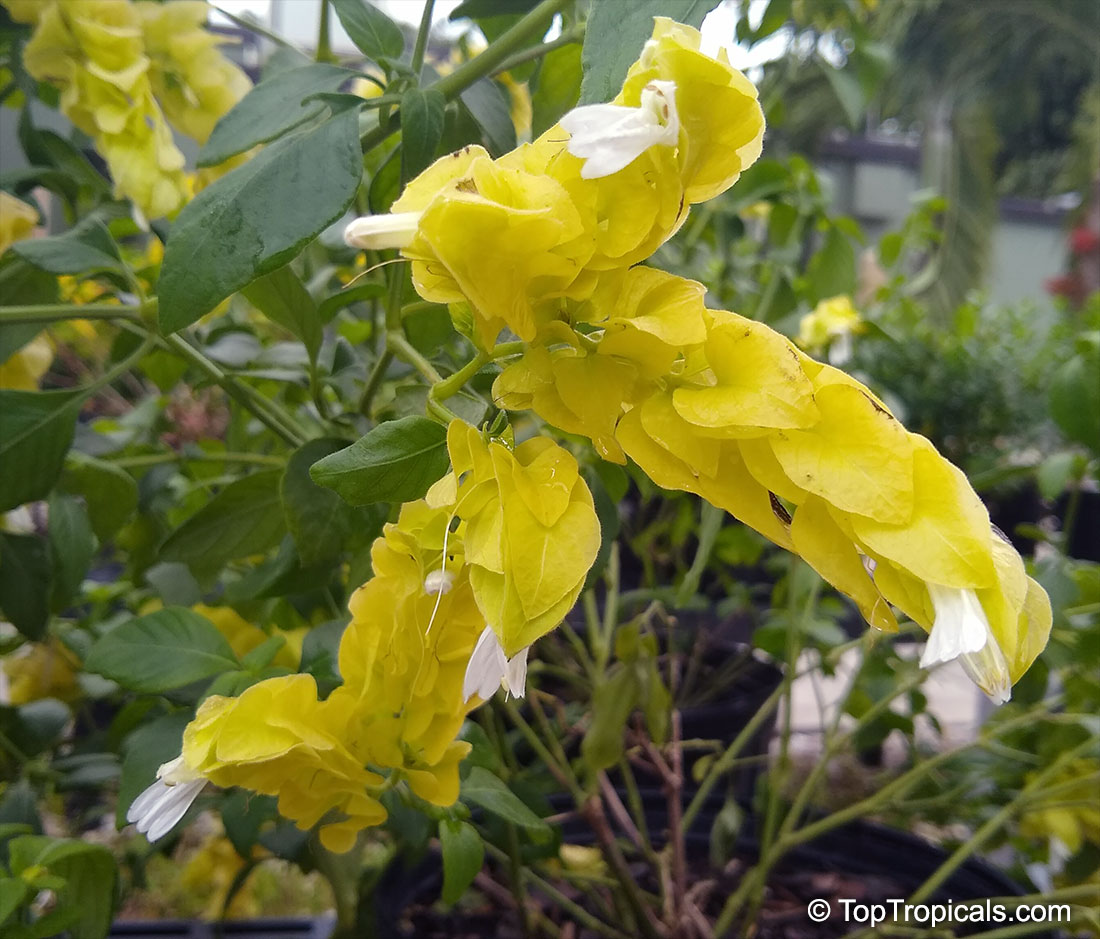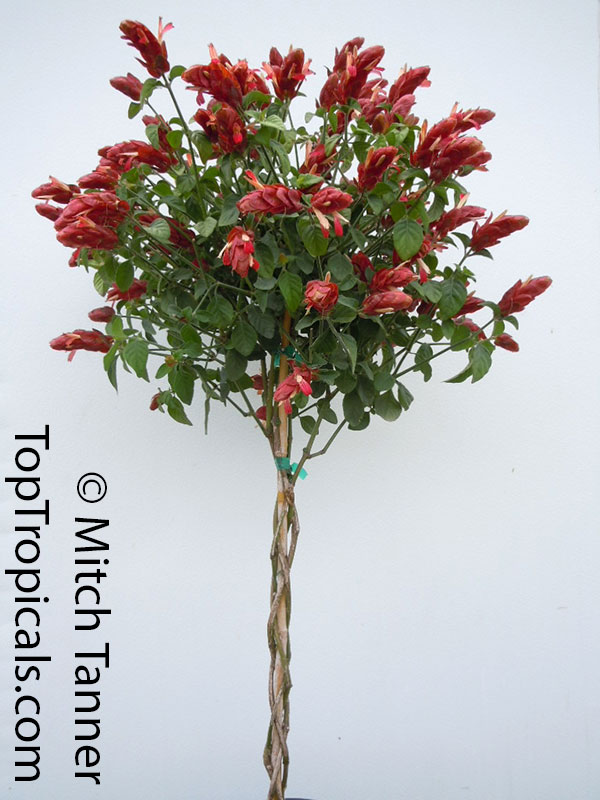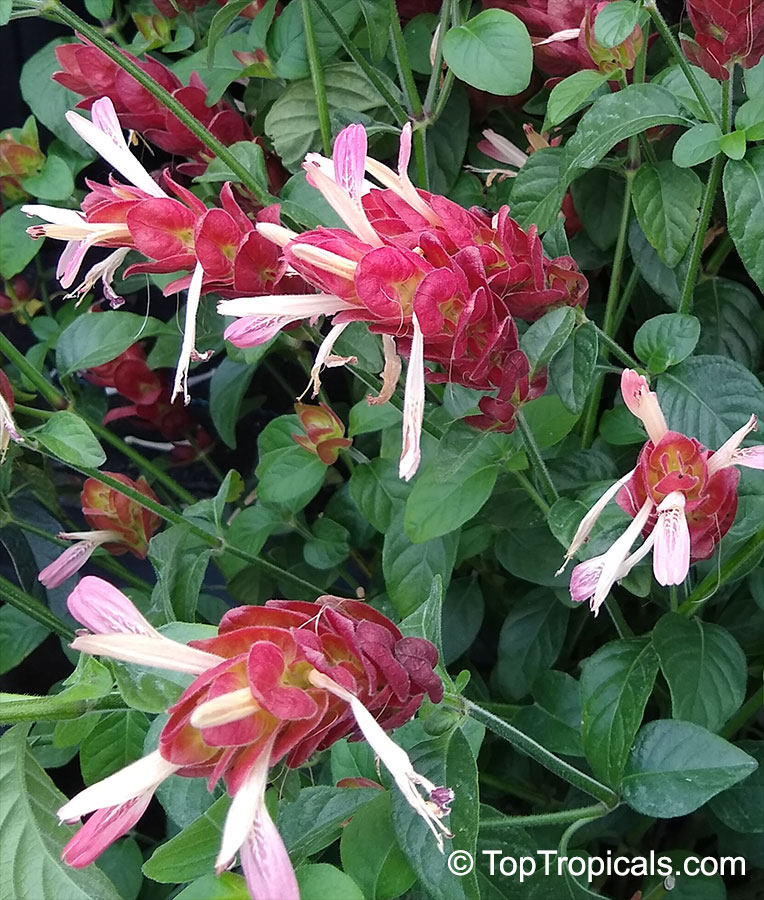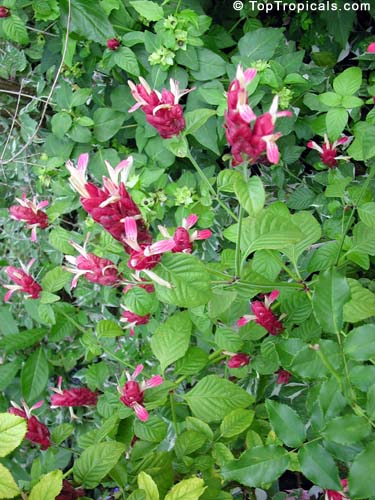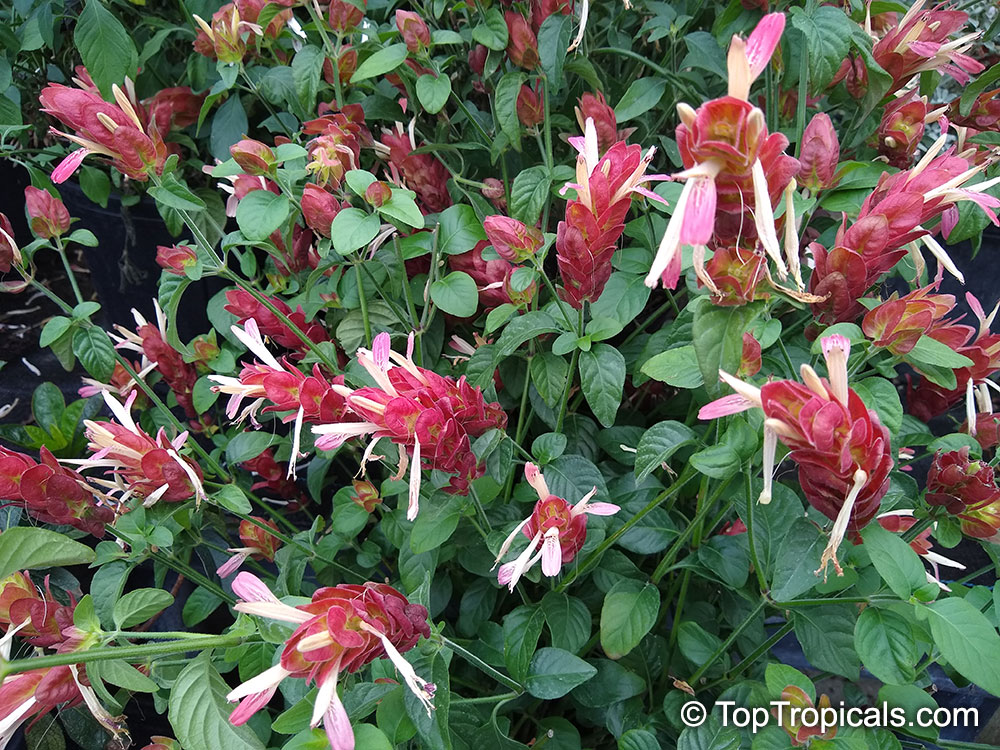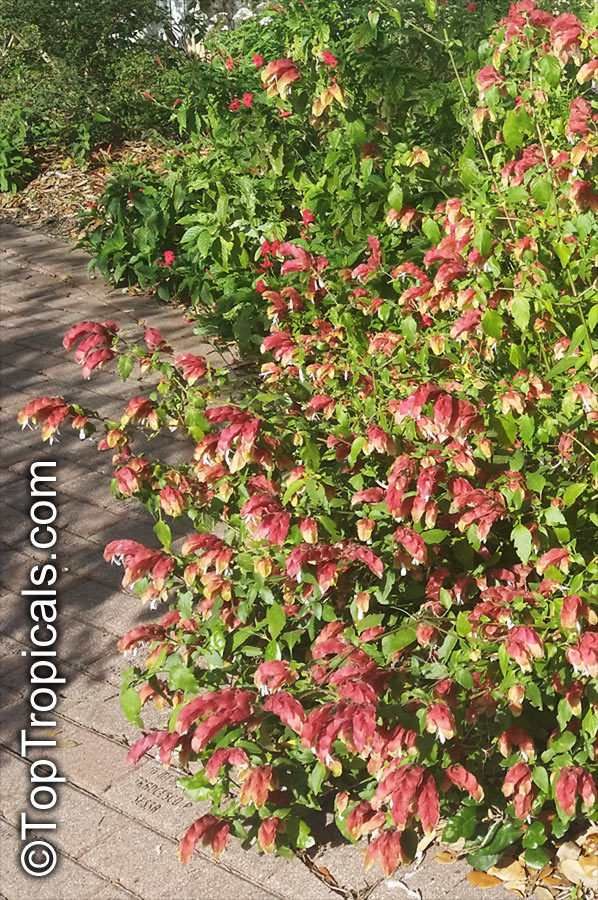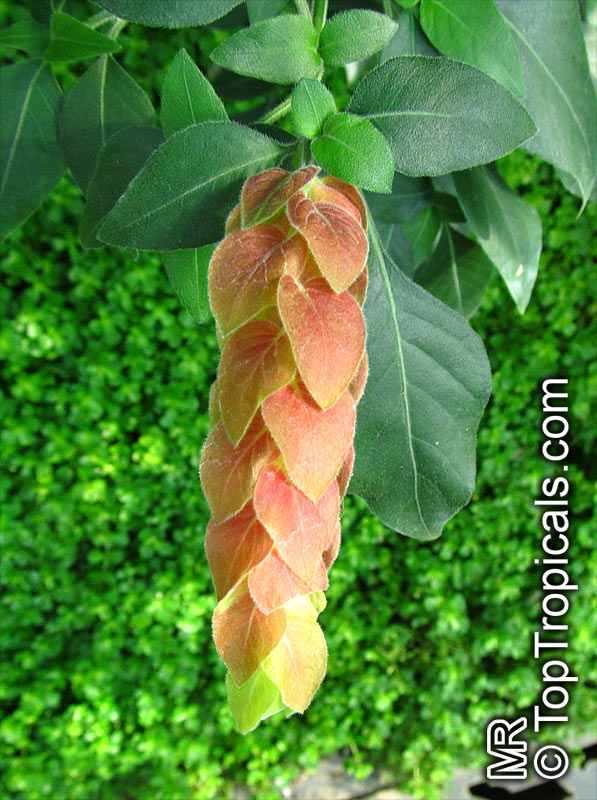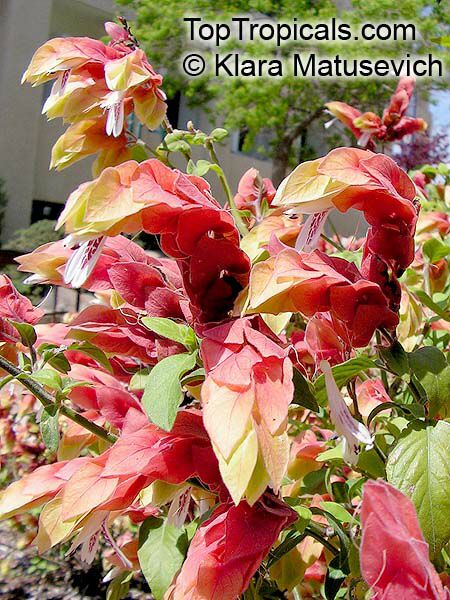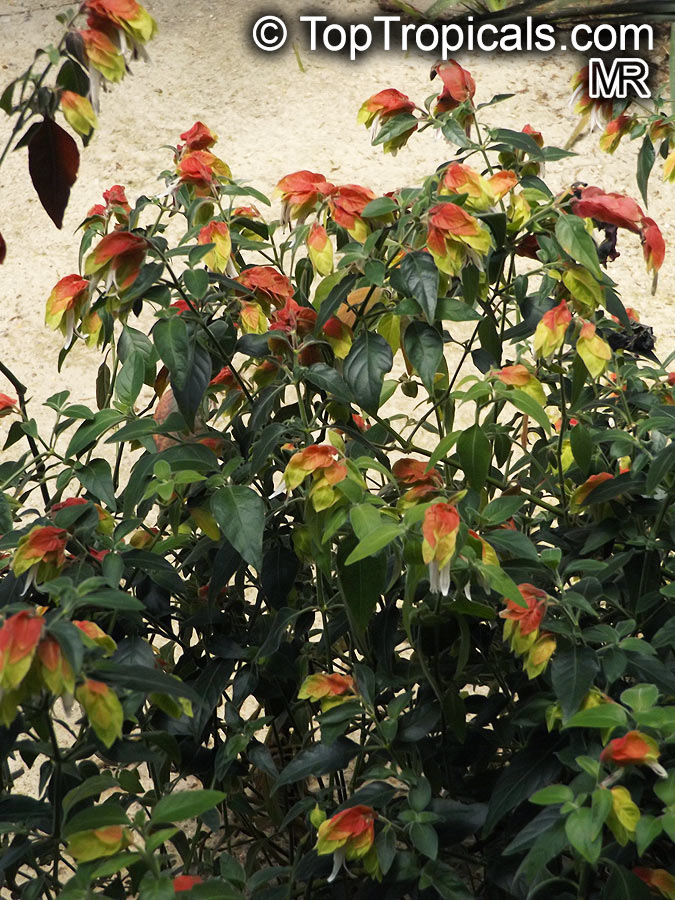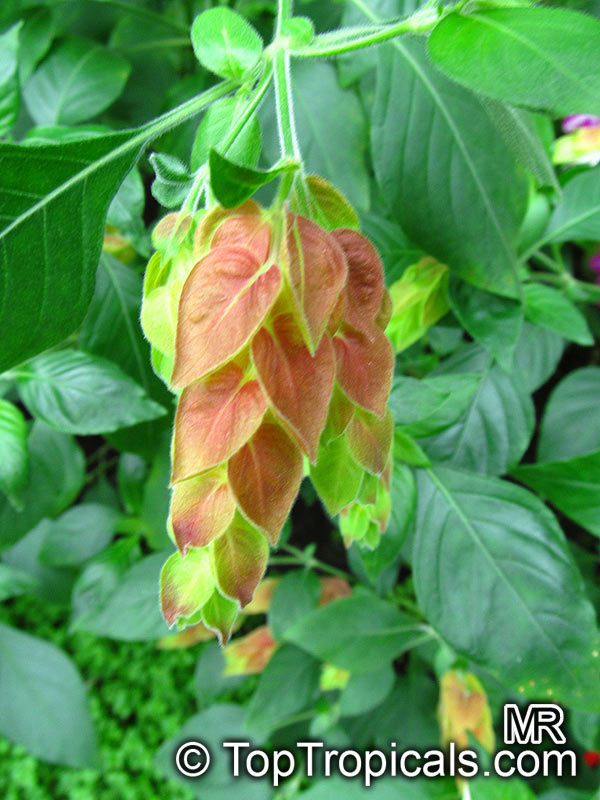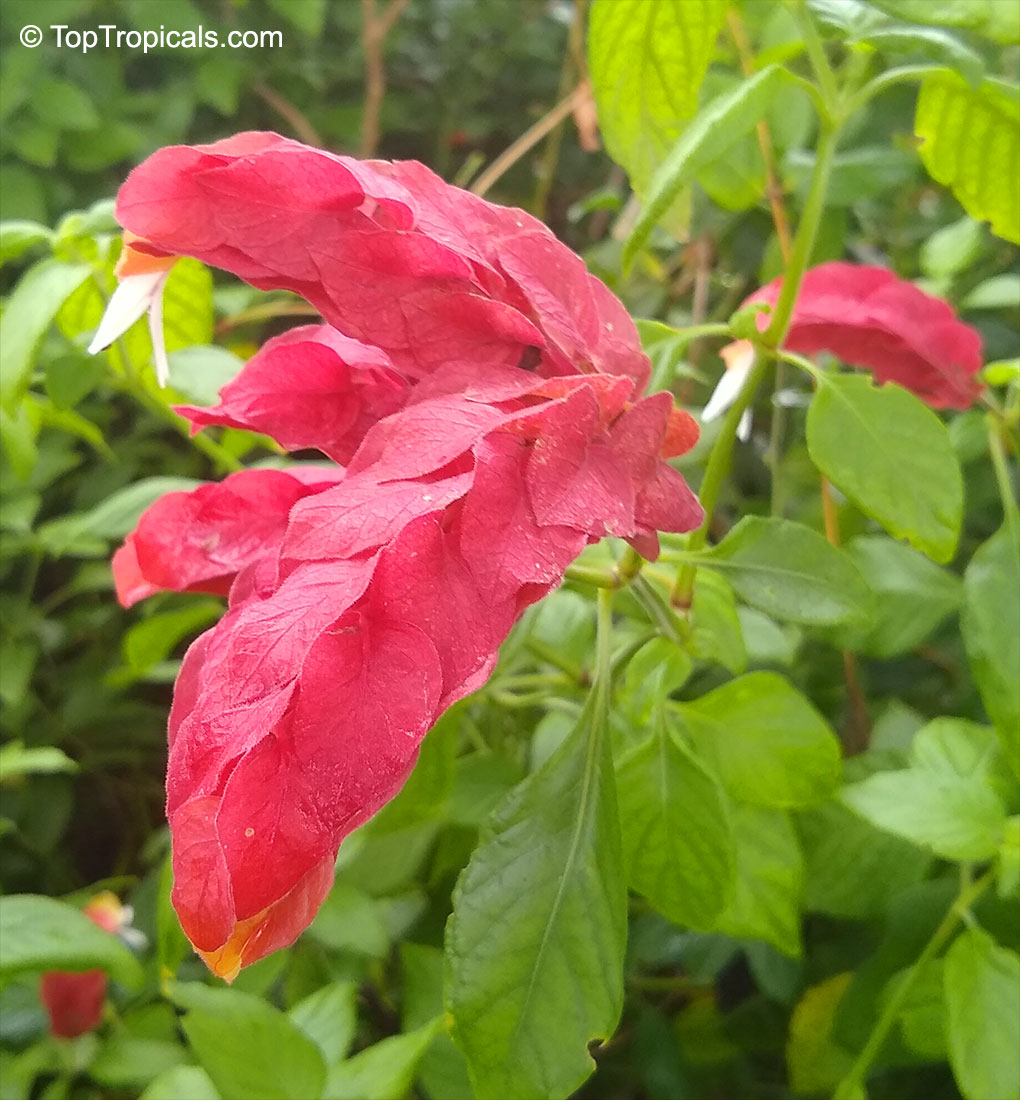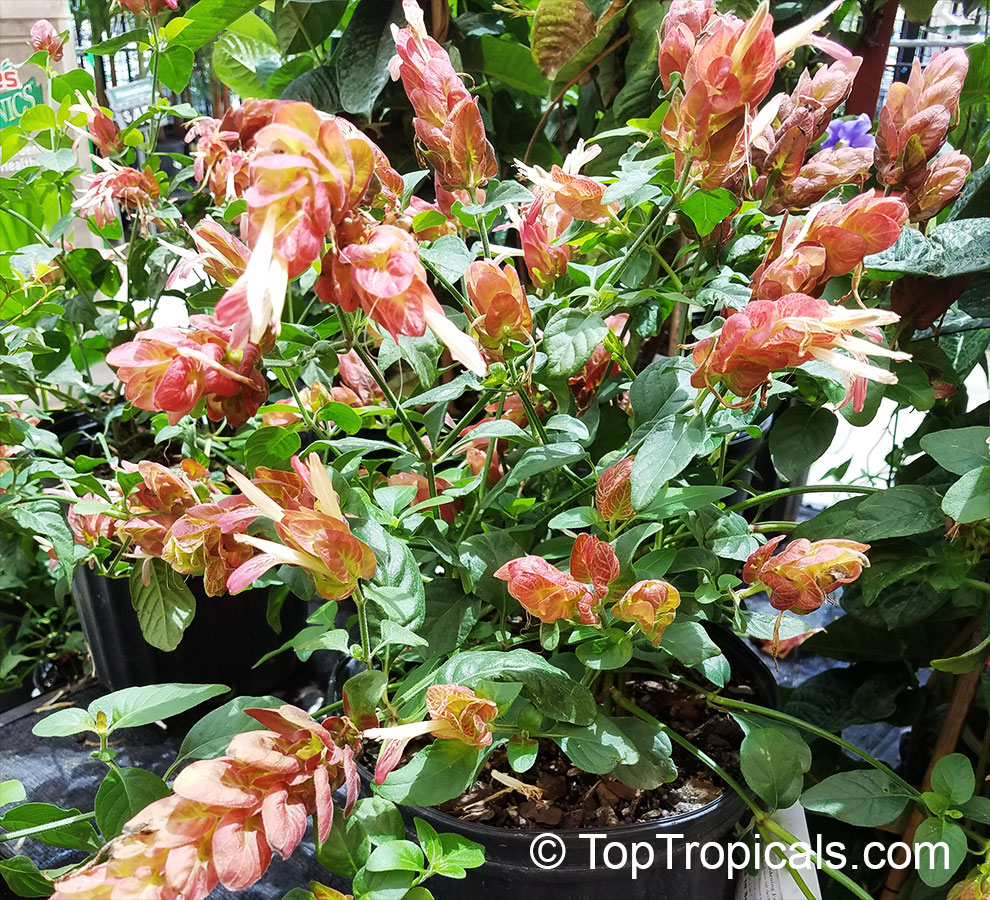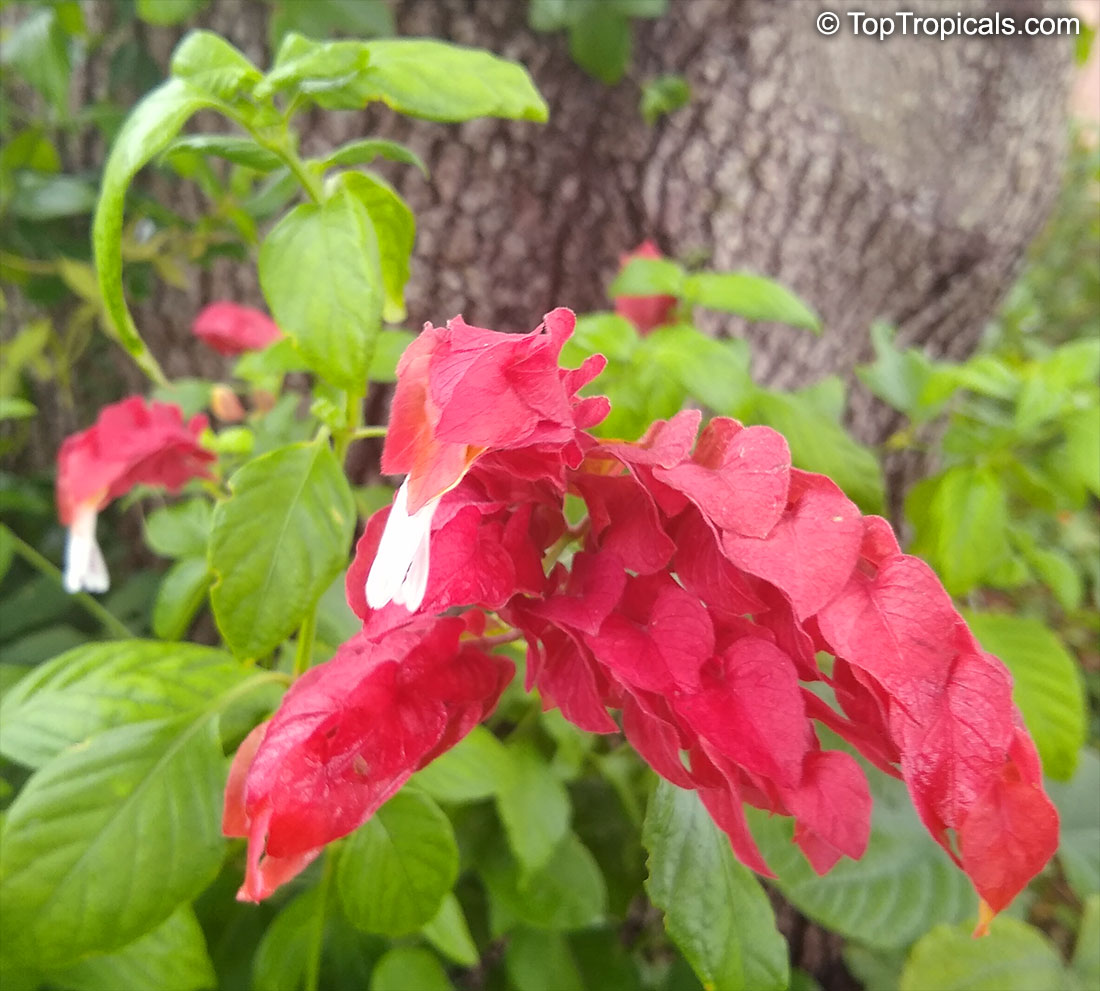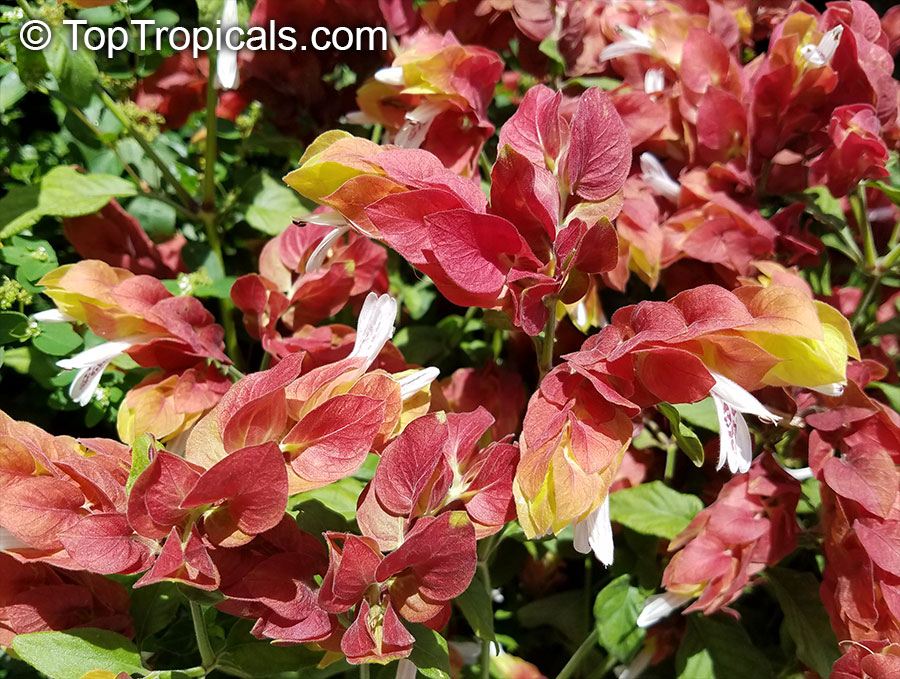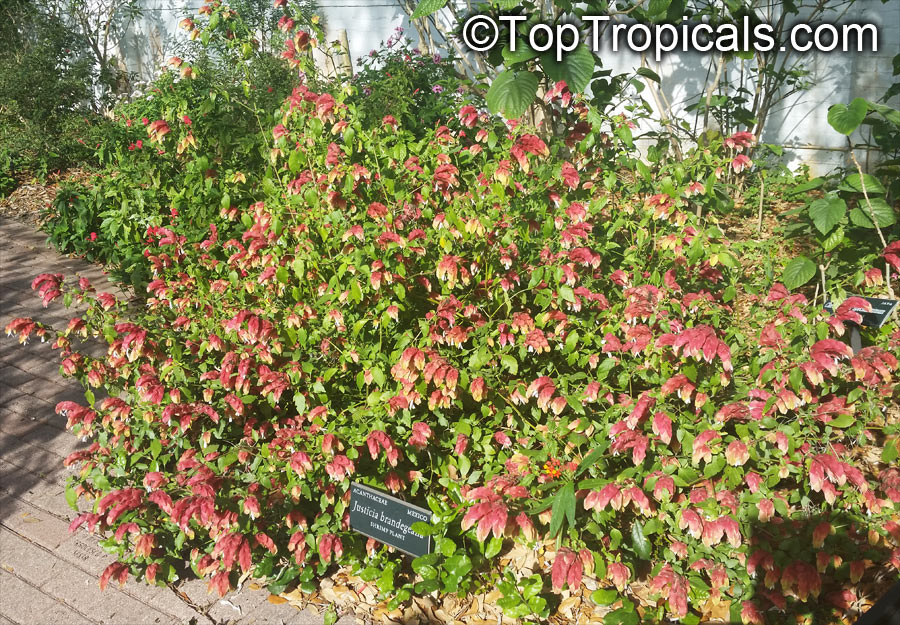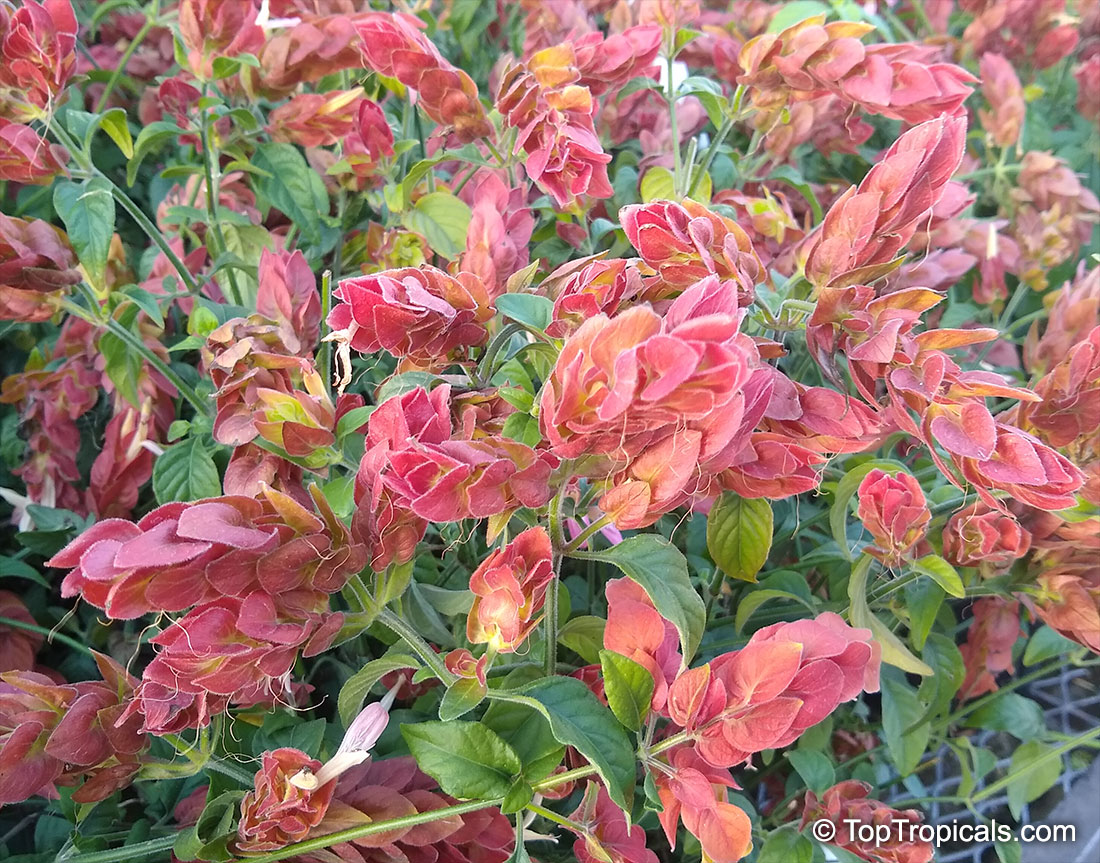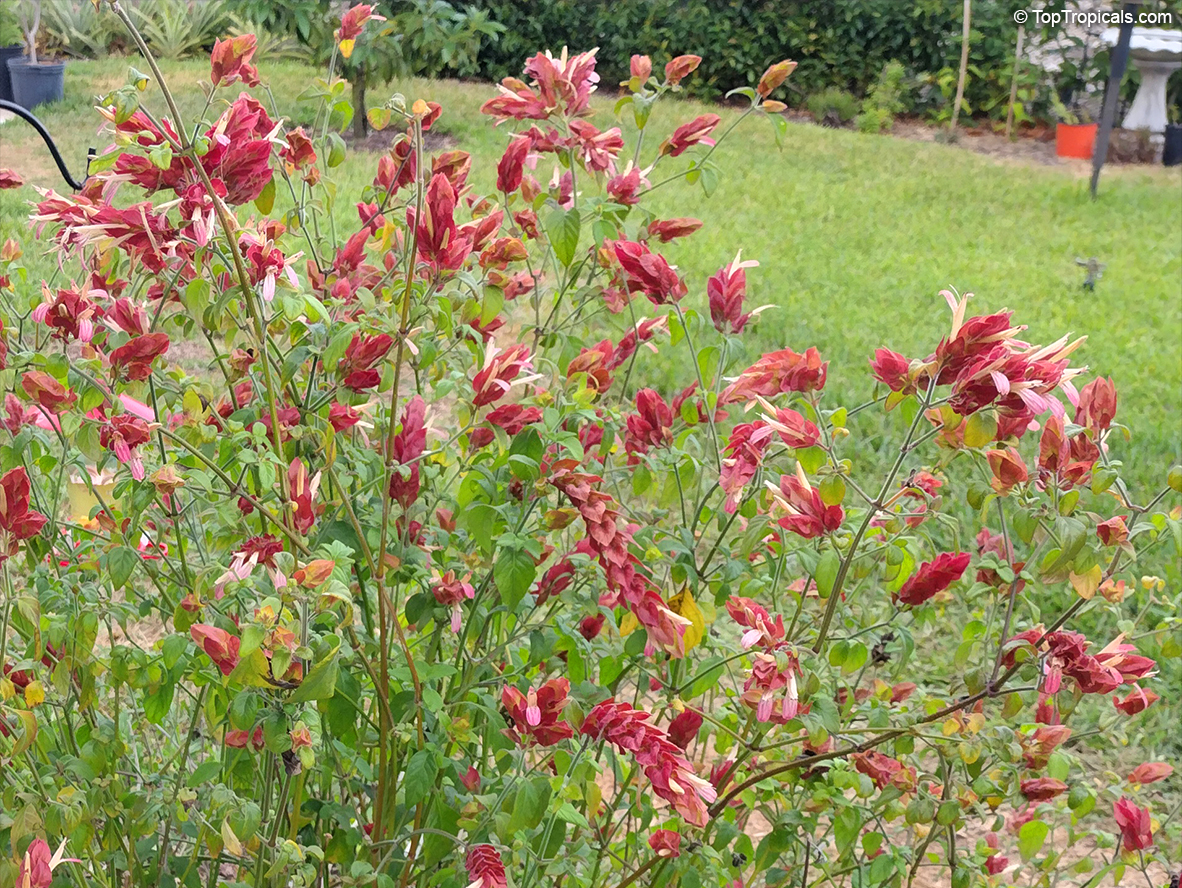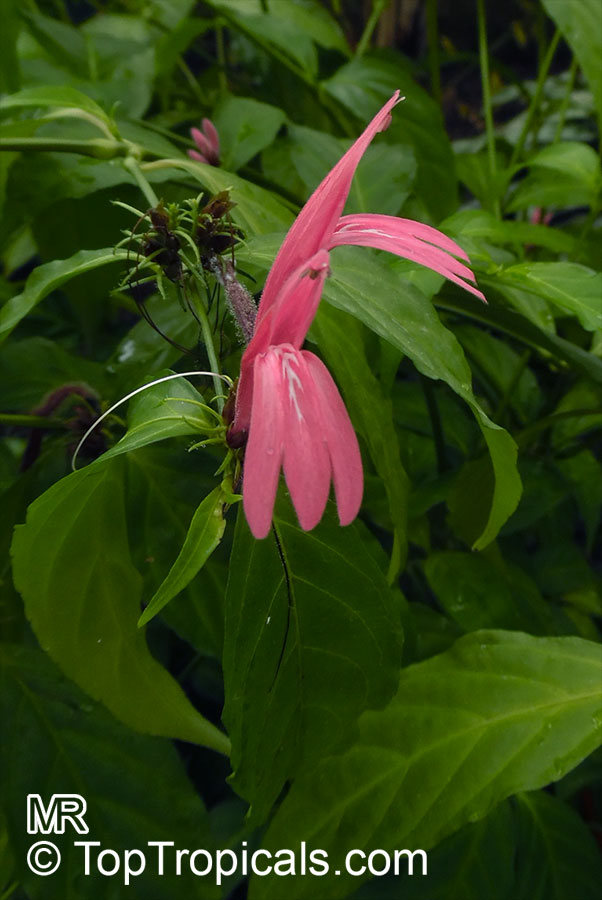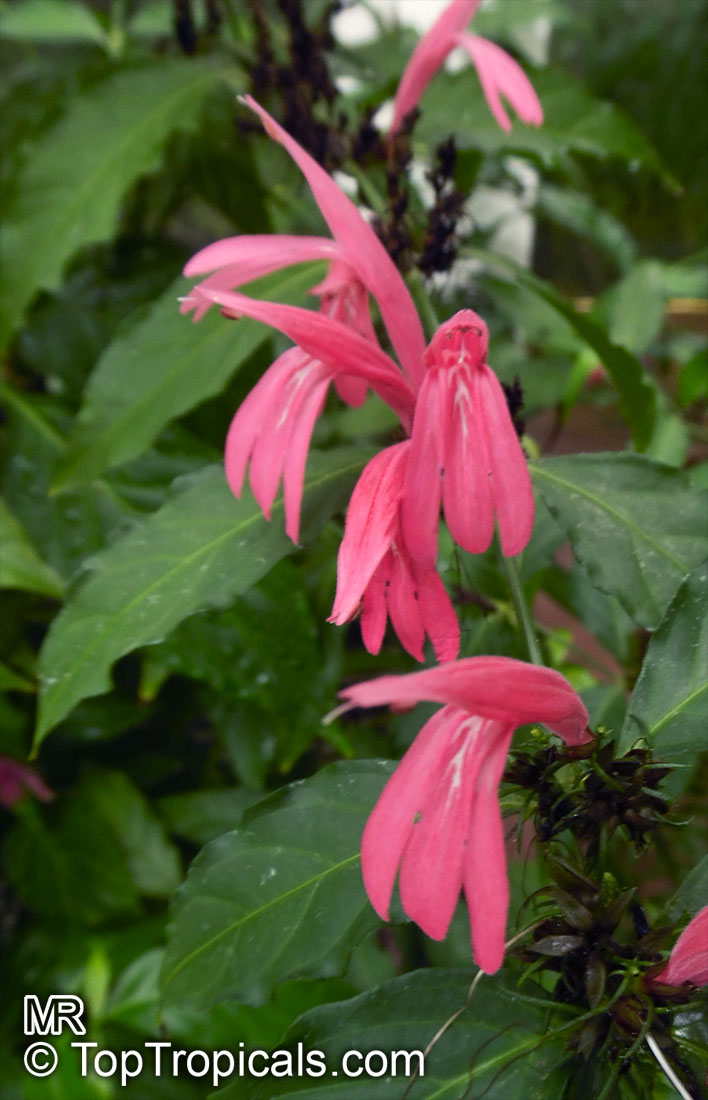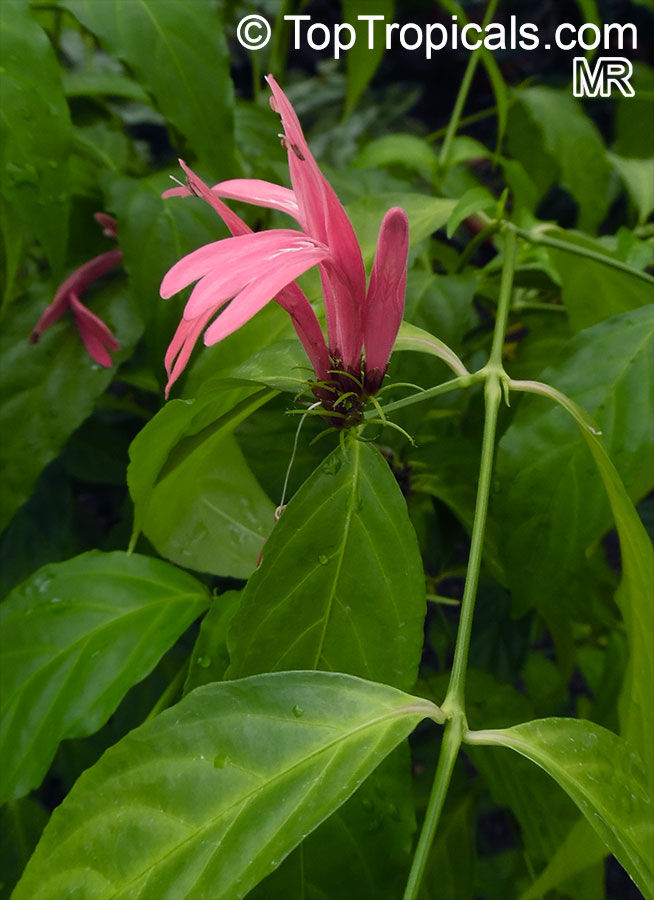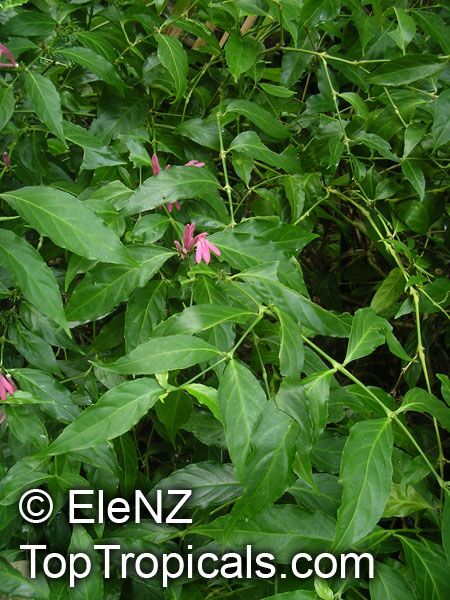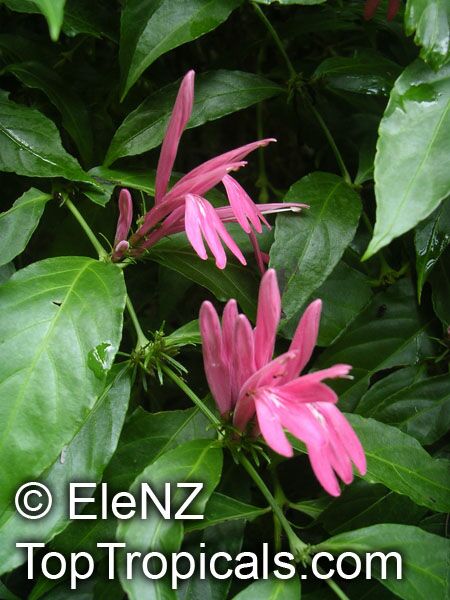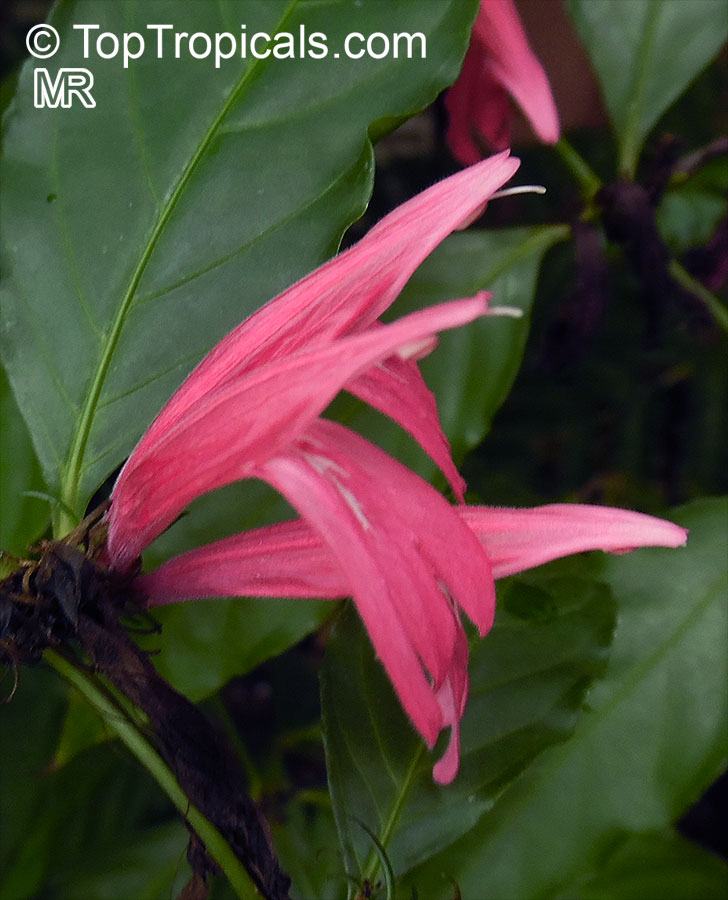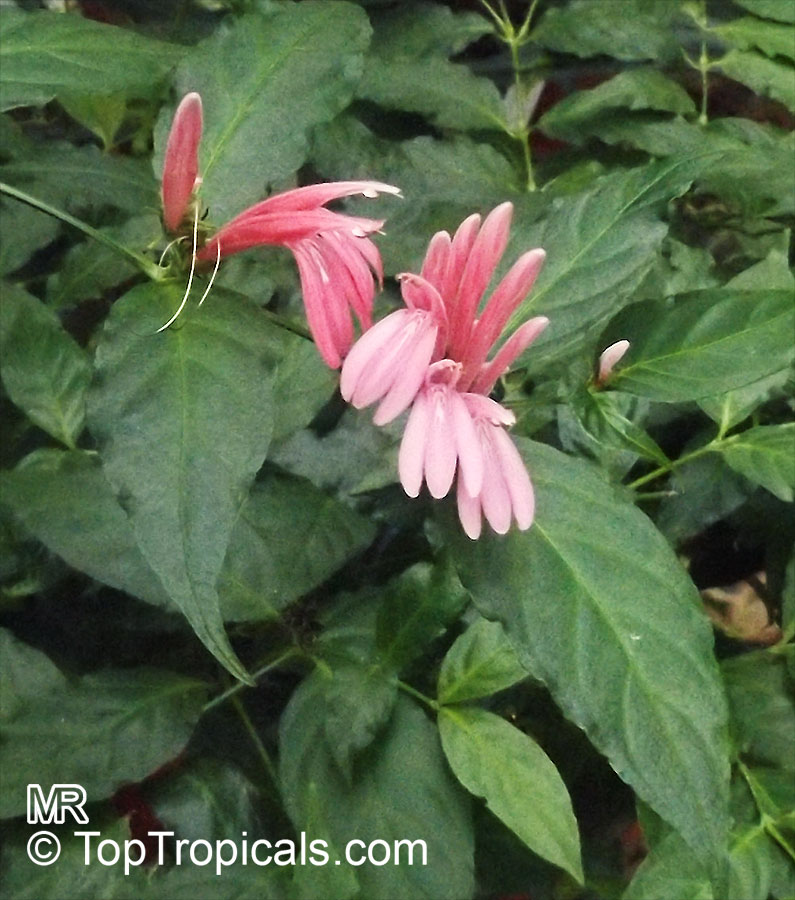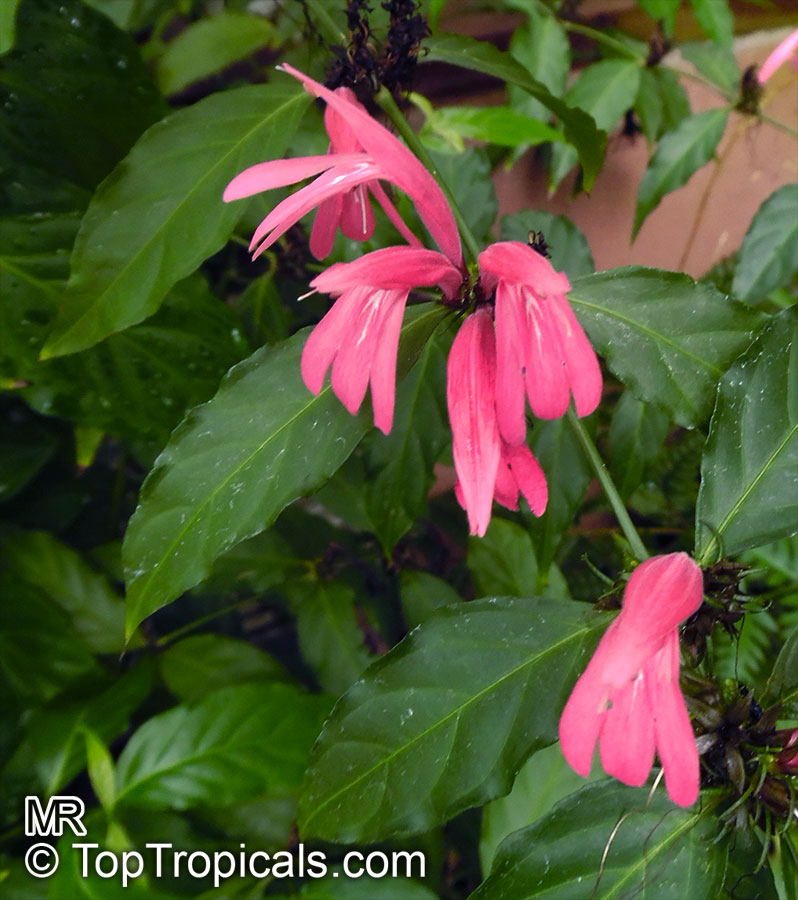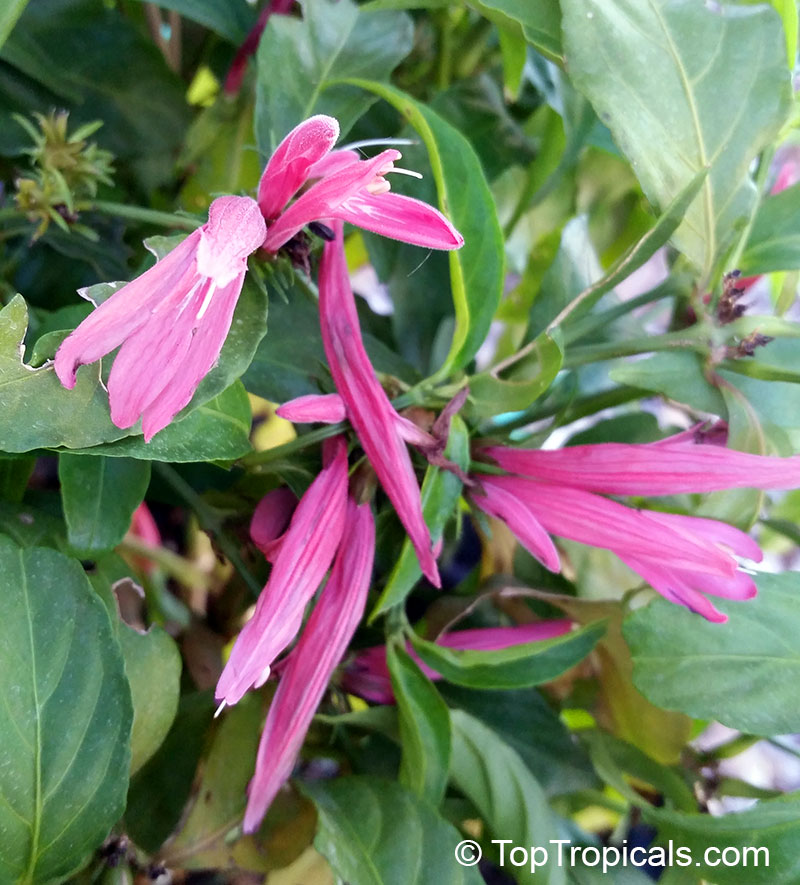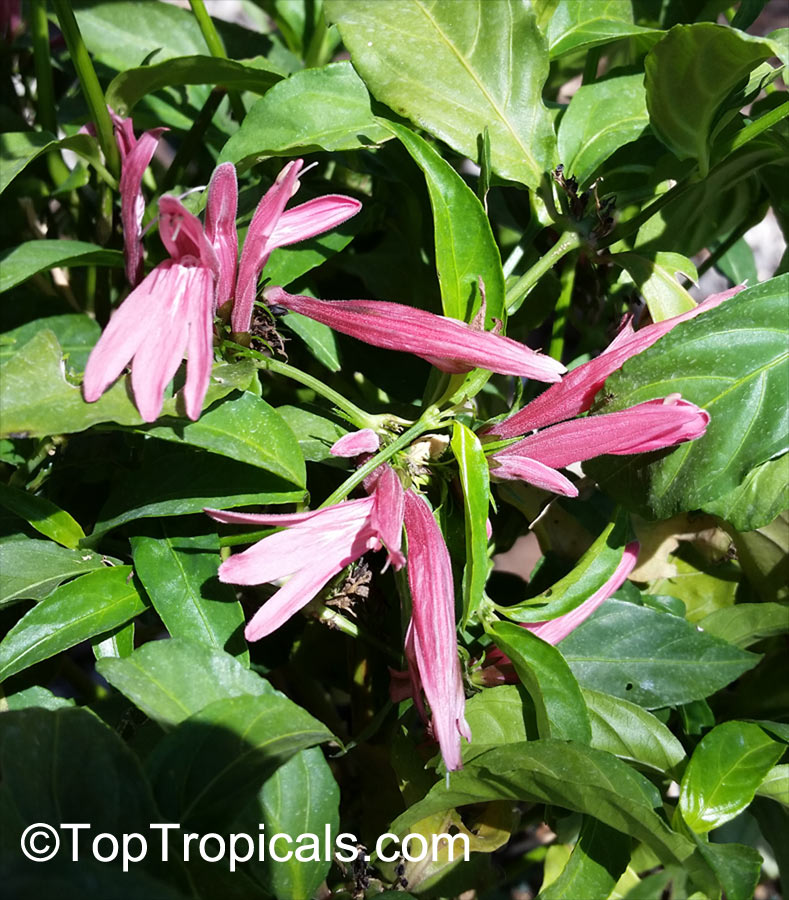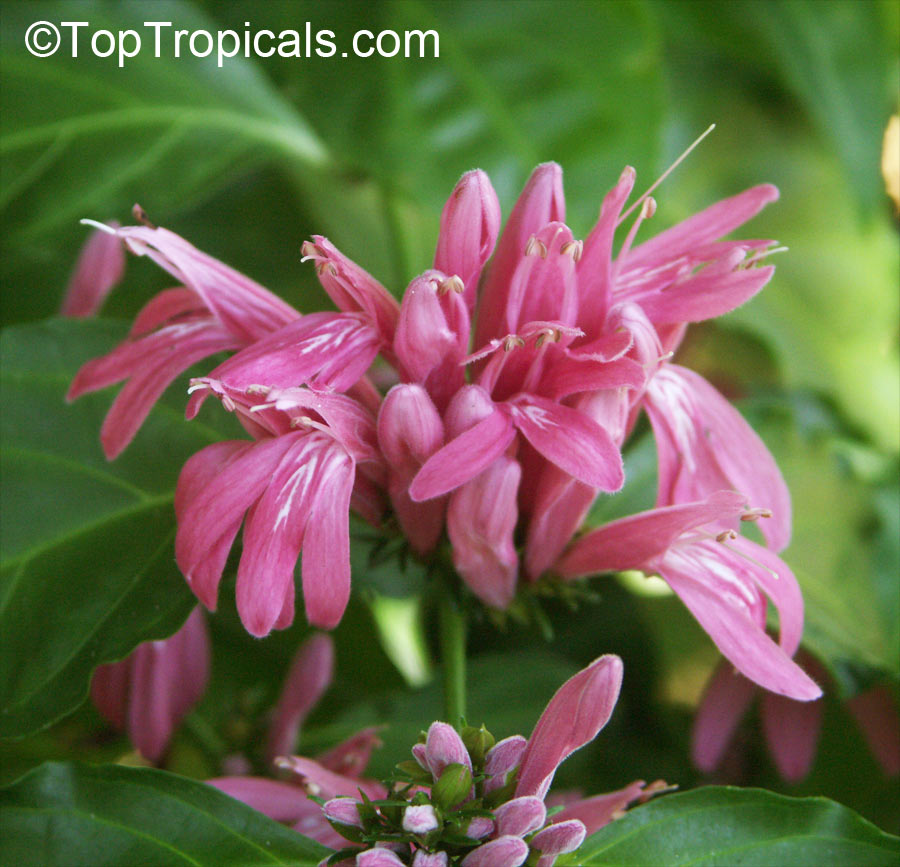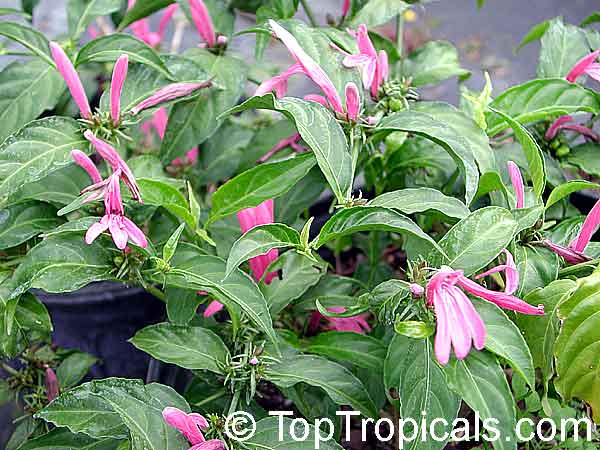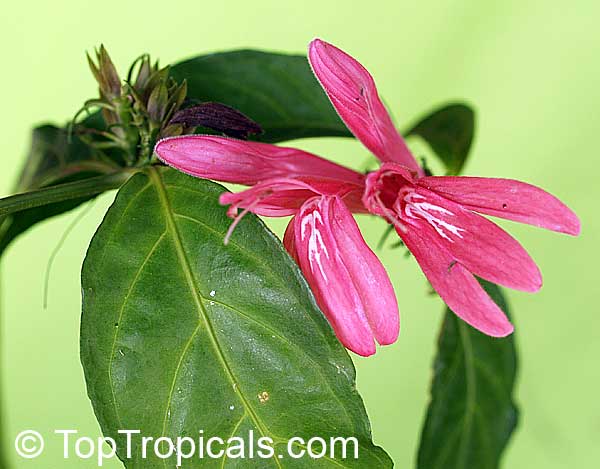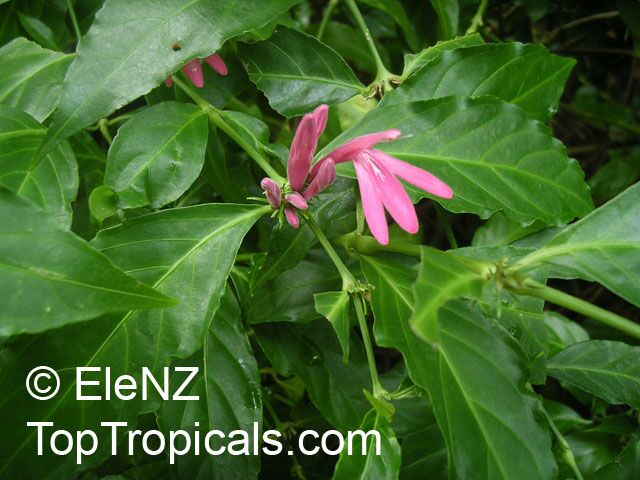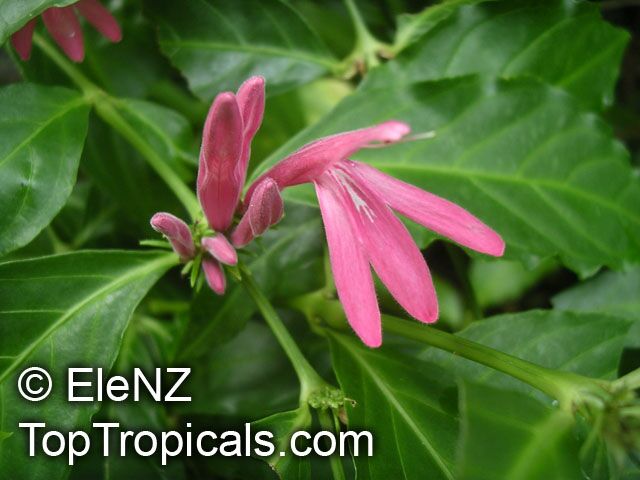Justicia - Plant Encyclopedia Results
Top Tropicals Plant Encyclopedia
| Number of plants found: 24 | Next | 
|
Go to page: | 1 | 2 | 3 |
Botanical names: Dicliptera suberecta, Justicia suberecta
Common names: Hummingbird Plant, Uruguayan Firecracker Plant
Family: Acanthaceae
Origin: South America








This small, bushy plant is native to South America, but can be enjoyed in many warm-weather climates. It typically grows 2-5 feet tall and thrives in full sun to semi-shade areas. To ensure your Dicliptera suberecta plant flourishes, it requires regular watering. Water your plant more frequently during dry, hot spells to keep the soil evenly moist. During cooler weather, moderate watering is adequate. The blooms are particularly eye-catching with their deep red, crimson and vinous flowers. In some varieties, the flowers are yellow and orange in color. This plant will attract butterflies and hummingbirds to your garden, making it a great choice for wildlife-friendly gardening.
This plant is hardy in USDA zones 9-11 and can be grown in pots in regions with cooler climates. When grown in containers, use a potting mix that drains quickly and water lightly throughout the cooler seasons. Make sure to choose a pot that is big enough to allow the plant to thrive and grow. During the winter months, you can bring it indoors to protect the roots from freezing. Place the pot in a bright location, away from direct sunlight and water it periodically to keep the soil slightly moist.
Overall, Dicliptera suberecta is a beautiful and easy to care for plant that will make a great addition to your outdoor space. With its vibrant blooms and eye-catching foliage, it's sure to draw attention and add a touch of color and life to your garden.
Botanical names: Graptophyllum pictum, Justicia picta, Graptophyllum hortense
Common name: Caricature Plant
Family: Acanthaceae
Origin: New Guinea







Tropical Old World shrub having purple or red tubular flowers and leaf markings resembling the profile of a human face or caricature. Foliage is oval shaped, glossy, variegated and leathery; leaves are up to 5 inches long. Bright light with high humidity enhances growth; useful for height in the back of a planting bed or as a specimen. Requires consistently moist soil; do not let dry out between waterings.
Recommended Fertilizer: SUNSHINE Megaflor - Bloom Nutrition Booster
Botanical names: Justicia adhatoda, Adhatoda vasica
Common names: Malabar nut, Adhatoda, Vasa
Family: Acanthaceae
Origin: Sri Lanka







The plant has been recommended by Ayurvedic physicians for the management of various types of respiratory disorders. The shrub is a good source of nectar. Honey produced from this plant has been reported to be a powerful expectorant and antispasmodic. It is also very useful for treatment of cold, cough, chronic bronchitis, hectic fever, gonorrhoea and opthalmia. The boiled leave give a durable yellow color to dye coarse cloth and animal skins. The leaves are also applied as green manure because of their potassium nitrate contents. The leaves of the shrub are used in packing and storing fruit because these help immature fruits to hasten the process of ripening and to develop the natural color. These also inhibit fungi and repel insects from stored fruits. An infusion of the leaves is used for destroying termites, flies, mosquitoes and other noxious insects. These contain the alkaloid vasicine, which is toxic to cold blooded animals (including fish) but not to mammals. The leaves inhibit and check the development of parasitic vegetation. The shrub can grow on such places where other vegetation cannot survive. It can be propagated by seeds or vegetative cuttings. It requires a tropical or sub-tropical climate and is damaged to some extent by frost in winter and recovers rapidly in spring. It is useful for soil erosion control.
Botanical names: Justicia aurea, Jacobina aurea, Jacobinia aurea
Common names: Yellow Jacobinia, Golden Plume
Family: Acanthaceae
Origin: Mexico, Central America








An evergreen shrub with striking, tubular yellow summer flowers. Justicia aurea prefers a partly shaded corner of the garden. In the spring, Justicia can be pruned hard to encourage bushy growth. It can also be grown in colder areas in wide pots, as long as it is brought indoors during winter. Suitable for group planting.
Botanical names: Justicia betonica, Justicia pallidior
Common names: White Shrimp plant, Squirrel Tail, Paper Plume
Family: Acanthaceae
Origin: South Africa






Justicia betonica (White Shrimp Plant) is a small, woody shrub native to South Africa that grows to heights of 2-5 ft. This beautiful and unusual plant is a great choice for growing in USDA Zones 9-11, as it will thrive with plenty of shade and semi-shade, and can even tolerate full sun in cooler climates. With regular watering, this plant blooms with white or off-white petals that age to a wonderful pink. It's an incredibly vibrant and eye-catching plant, and its free-branching, upright shape and amazing, tropical inflorescence of 6" white bracts will be sure to turn heads.
Growing and caring for Justicia betonica is fairly simple. While these plants prefer rich soil and good drainage, they don't necessarily need to be potted to thrive. However, if you live in a colder climate, potted plants will fare better and can easily be moved indoors when not in use. Make sure that the pot is well drained and has plenty of organic matter, and position it in a semi-shady area away from direct sunlight. Be sure to water regularly, but be careful not to overfill it, as this can cause root rot and other issues. Pruning is also recommended--even though it can grow quite tall, it can easily be shaped and kept to a manageable size. With proper care, Justicia betonica will be sure to provide months of striking beauty in any home garden.
Botanical name: Justicia brandegeeana
Common name: Fruit Cocktail Shrimp Plant
Cultivar: Fruit Cocktail
Family: Acanthaceae






A charming addition for any sunny to partly sunny exposure, its golden lime colored bracts accented by bright red flowers crown this upright grower in a never-ending display. As easy to grow as any in this genus, it tops the list as a free bloomer. Use it to brighten south, east, or west exposures, or as a potted container for the summer garden. Everbloomer.
Botanical name: Justicia brandegeeana
Common name: Yellow Shrimp plant
Cultivar: Yellow Queen
Family: Acanthaceae
Origin: Mexico







Justicia brandegeeana 'Yellow Queen', commonly known as Yellow Shrimp Plant, is a beautiful low-growing groundcover native to Mexico. It is a great choice for adding interest to large sunny areas and is also suitable for planting in semi-shade. Standing at just 2ft in height, the plant is decorated with yellow and orange flowers in spring and summer, drawing in butterflies and hummingbirds into the garden. It thrives best in USDA Zone 9-11 and requires regular watering for healthy growth.
To care for the Yellow Shrimp Plant when grown in cold regions, it is best to keep it in a large pot and bring it indoors during the winter months. An annual pruning is recommended to encourage healthy growth and to maintain the shape of the plant. During the growing season, it's important to water the plant regularly and to feed it with a general-purpose fertilizer. When kept in full sun, the plant blooms more prolifically and the flowers will last longer.
Botanical name: Justicia brandegeeana
Common name: Red Shrimp Plant
Cultivar: Red
Family: Acanthaceae
Origin: Mexico








Showy small shrub with red and white flower spikes. Shrimp Plant is evergreen in mild climates, and blooms almost continuously. The leaves are oval, light green. The young stems and the undersides of the leaves are soft and downy. There are cultivars with yellow bracts, bright red bracts, and others with lime green bracts. A weak, sprawling plant, it needs regular pruning.
It can also be grown in colder areas in wide pots, as long as it is brought indoors during winter.
Botanical names: Justicia brandegeeana, Beloperone guttata
Common names: Mexican Shrimp Plant, Shrimp Plant
Family: Acanthaceae
Origin: Mexico







Justicia brandegeeana (Mexican Shrimp Plant), is a captivating and ornamental native to Mexico. Growing between 2-5 ft tall and wide, this small shrub is striking with its off-white and crimson blooms atop a stem that can reach up to 8 in. The flower spikes themselves, have yellowish bracts that remain long after blooms have faded, further adding to the beauty and decoration of this small shrub. The foliage of this plant is composed of light green oval leaves that are soft to the touch and downy on the underside of each leaf.
Though this plant is evergreen in mild climates, and blooms almost continuously, it is important to prune regularly and to accommodate the Mexican Shrimp Plant's weak sprawling nature. In colder regions, this plant can be successfully grown in wide pots, so long as the plant is brought indoors during the winter months. When growing this plant in containers, it is important to remember to provide plenty of full sun for the plant to thrive, however it may also tolerate partial shade, and require regular watering, as well as having its soil slightly moist at more moderate times.
Native to USDA Zones 8-11, this small shrub rewards those who keep it with a show of off-white and crimson flowers almost continuously throughout the year. With proper pruning and water care, this Mexican lovely is sure to light up any outdoor living space, be it in the garden or in a wide container.
Botanical names: Justicia brasiliana, Dianthera nodosa
Common name: Pink Justicia
Family: Acanthaceae
Origin: Mexico





Small herbaceous climbing shrub with lanceolate, dark green leaves. Its bilabiate flowers are pale red to crimson, with the lower lip divided into three segments. A great butterfly attractor.
| Next |  |
Use link to repeat this search:
https://toptropicals.com/cgi-bin/garden_catalog/cat.cgi?find=justicia&search_op=and&keyword_op=and&language=e&number=10
&no_change_lang=1&user=tt&sale=1&first=0
